|
|
Post by chasensfo on Jan 5, 2023 1:00:31 GMT -5
\\Citybird 1998 v2 (04JAN23; Changed aircraft order for better AI parking in BRU, fixed a 767 being assigned to an MD-11, added an MD-11 leased from World Airways, added livery variations for available repaints, and changed cruise speeds to AIG standard. CityBird (1996-2001) IATA: H2 ICAO: CTB CALLSIGN: DREAM FLIGHT CityBird was a short-lived Belgian leisure airline that offered both scheduled and charter services along with operating flights on behalf of SABENA. CityBird was founded in late 1996 with the slogan "The Flying Dream" and marketed as a light-hearted holiday carrier with modern aircraft. Flights began that same year with a white MD-11 leased from World Airways and two 767-300ERs, one of which wore a white livery. Though only worn by one aircraft at the start of operations, the green livery would become standard. With long-range aircraft, CityBird offered scheduled services across North America, reaching as far West as Oakland (OAK) and Los Angeles (LAX) along with various cities in the Caribbean. In addition to scheduled destinations, CityBird had a large charter network that accounted for much of its flying outside of the few weekly scheduled sectors flown by its few aircraft. An MD-11 in the green livery was added by 1998, and 2 additional MD-11s were painted in the full colors of SABENA to operate that carrier's scheduled service with SABENA flight numbers. CityBird's SABENA network included flights to Montreal (YUL), Newark (EWR) and Sao Paolo (GRU). The airline offered 3 classes of service on its own CityBird branded flights; "Royal Eagle" (business), "Premium Flamingo" (premium economy), and "Colibri" (economy). In late 1999, the carrier added 737-300\400\800s to expand into the intra-European market and a pair of A300 freighters for cargo operations. This decision quickly derailed the company, and passenger services ended in 2001 with cargo flights operating a few months longer before also ceasing. The 737s and 2 cargo A300 did not come until the very end of 1999, practically in 2000, and are not included in these flight plans as they are already well represented in 2001 CityBird flightplans available on the RetroAI forums. One of the 767-300s wore the white livery in 1998, but was painted into the green livery in 1999. Micheal Pearson has painted both. There was an interesting Just Planes\World Air Routes flight in the video made about this carrier if that interests you. Charter routes are all real, and times and flight numbers are representative. From my research, I determined that CityBird had long ground times in BRU where much of the small fleet was often gathered, so this is reflected in the plans. All repaints are completed: FSPX MD-11 Fleet: library.avsim.net/search.php?SearchTerm=fspx_md-11_ctb.zip&CatID=root&Go=SearchFSPX MD-11 SABENA: library.avsim.net/search.php?SearchTerm=fspx_md-11_sab.zip&CatID=root&Go=SearchFAIB 767-300 Fleet: library.avsim.net/search.php?SearchTerm=faib_767-300_ctb.zip&CatID=root&Go=SearchUTT MD-11 + AIA 767-300 + FAIB 737-300\400\800 (FS9 Native): library.avsim.net/search.php?SearchTerm=citybird_fleet.zip&CatID=root&Go=SearchMD-11 Scheduled flights: 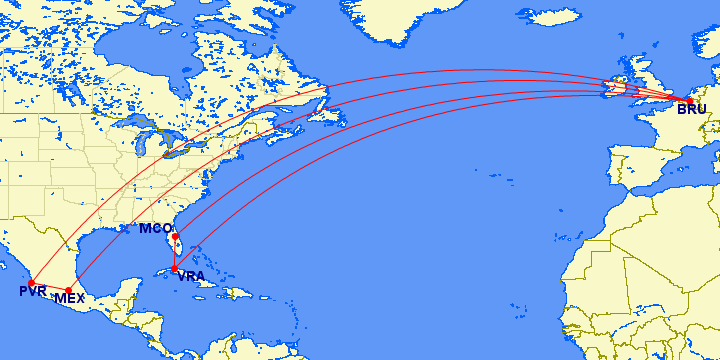 MD-11 SABENA flights:  MD-11 Charter flights: 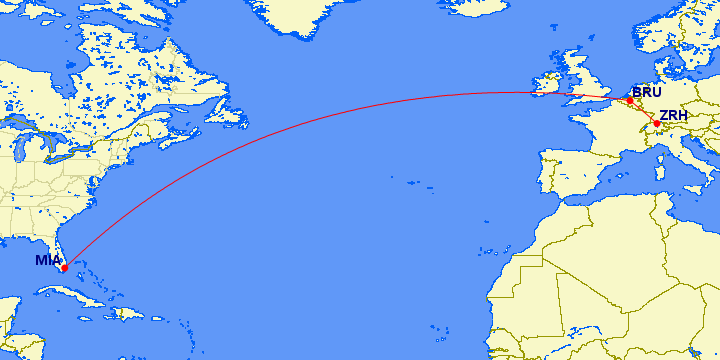 767-300 Scheduled flights: 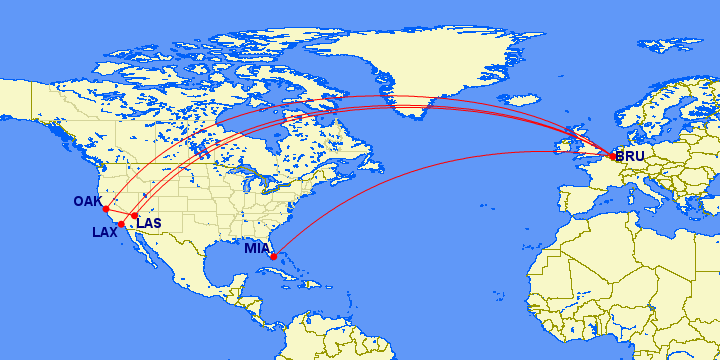 Download CityBird 1998 Flightplans v2 Here Download CityBird 1998 Flightplans v2 Here |
|
|
|
Post by chasensfo on Jan 7, 2023 23:16:54 GMT -5
\\Hapag Lloyd 1998 v3 (07JAN23; Added livery variations for Micheal Pearson's fleet repaints) Hapag Lloyd (1973-2007) IATA: HF ICAO: HLF CALLSIGN: HAPAG LLOYD Hapag Lloyd Flug (better known as Hapag Lloyd), was a large Hannover-based(HAJ) German leisure airline with a vast scheduled network, which was owned by the shipping and logistics giant "Hapag Lloyd" and operated in their livery for several decades. The airline was founded by Hapag Lloyd in 1972 and began operating in 1973 with Boeing 727s to provide transportation from Germany to various ports on behalf of cruise operators. Within a few years, the airline had expanded to add aircraft like the Bac 1-11 and 737-100 and began to compete with Condor and other leisure carriers by offering its own ticket sales to the Mediterranean and Canary Islands with scheduled flights. In 1979, the carrier absorbed West German carrier Germanair, acquiring it's wide-body Airbus A300s and quickly growing into the largest charter airline in Germany in terms of flights. The airline had flights from all across Germany, Switzerland, Austria, and even Luxembourg to various holiday destinations serving most German commercial airports, and with large hubs in Frankfurt(FRA) and Dusseldorf(DUS). The carrier added several A310s and replaced the narrow body types with 737-400s and a few 737-500s through the 1990s. In 1997, the airline was sold to the new TUI-Group, which would absorb various other leisure airlines like Corsair of France and Britannia of the UK, but the carrier retained its individual identity for several years. In 1998, the first of the brand new 737-800s arrived, and the type was initially used on longer routes to Greece and the Canary islands primarily, as well as 737-500 routes which could use the extra capacity of the 737-800. The few 737-500s remaining in the fleet at the time were retired by 1999 once replaced by the new 737-800s, and 737-400s made up the bulk of the airline's fleet. A310-200s and A310-300s were active both on medium-haul or high-density European routes and also to the Dominican Republics(POP and PUJ). Turkey had grown very popular with German leisure travelers, and the airline had developed a network connecting points in Turkey with about 10 German cities. The airline did not offer scheduled domestic routes, and the only domestic flights were done as stopovers on international journeys. At the time, Hapag Lloyd was the only airline with scheduled flights to Lubeck(LBC), and was serving most routes only 1-3 times weekly, often flying to a leisure destination from a different city each day of the week. Most aircraft wore the original 1973 livery at the time, though one A310-300 had a white fuselage and 1 737-500 had a white nose cone. In 2002, the TUI Group took over the 30-year-old identity of Hapag Lloyd and began to repaint the aircraft in the new blue and white TUI livery. At the same time, the TUI Group used some of Hapag Lloyd's assets to launch a low-cost carrier called Hapag-Lloyd Express to compete with the likes of Ryanair and British Airways' goFly. In 2005, the carrier was renamed "Hapagfly" and the fleet soon grew to 40 737-800s. In 2007, Hapagfly and Hapag-Lloyd Express were fully absorbed by TUI, merged, and used to form a new airline named "TUIfly". The former assets of Hapag Lloyd are still active today as "TUI fly Deutschland" with no independent identity. Flightplans by Vireak Ball and myself. All repaints are completed: TFS A310-200\300 Fleet by Michael Pearson: mpai4fs.com/2023/01/05/hapag-lloyd-a310/TFS A310-200\300 (FS9 Native; includes needed white livery): library.avsim.net/search.php?SearchTerm=tfs_a310_hlf.zip&CatID=root&Go=SearchFAIB 737-800 by Michael Pearson: mpai4fs.com/2023/01/05/hapag-lloyd-737-800/FAIB 737-800 by Jonathan Alba and piper: drive.google.com/drive/u/1/folders/1Z1GzqeRJV_5ThuXu4KkfhEoJPDVAn1syFAIB 737-400 by Michael Pearson: mpai4fs.com/2023/01/05/hapag-lloyd-737-400/FAIB 737-400 by Jonathan Alba and piper: drive.google.com/drive/folders/1kHOpX4bSpMmHgscGdEItXqE1_t3rf1KV?usp=sharingFAIB 737-500 by Jonathan Alba and piper(includes "white nose" modification by myself: drive.google.com/drive/u/1/folders/1_aZmU3-rN0b9WkYO2dYULQD9ebrNkbirFAIB 737-500 by Michael Pearson: mpai4fs.com/2023/01/05/hapag-lloyd-737-500/A310-200\300:  737-800: 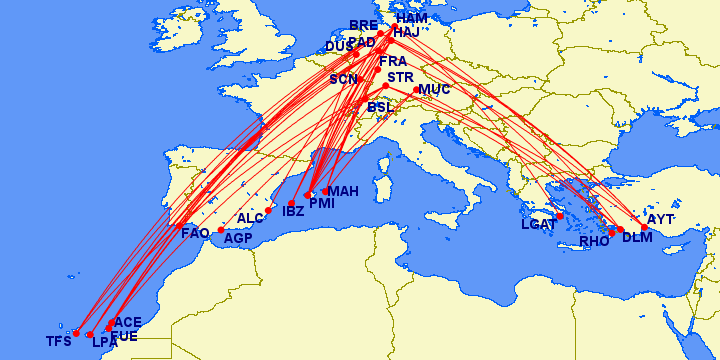 737-500:  737-400: 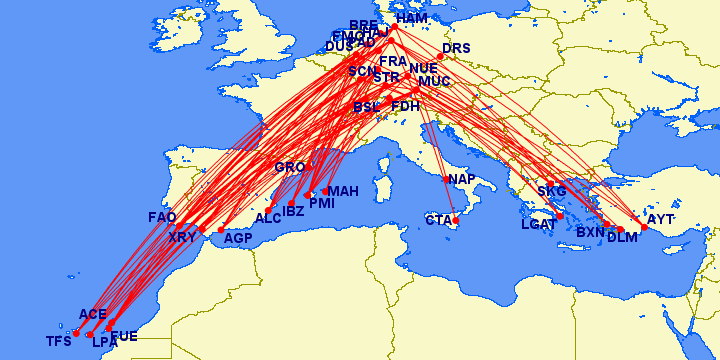 Download Hapag Lloyd 1998 v3 Flightplans Here Download Hapag Lloyd 1998 v3 Flightplans Here |
|
|
|
Post by chasensfo on Jan 8, 2023 3:15:30 GMT -5
//Condor Flugdienst 1998 v2 (08JAN23; Added fleet variations by Micheal Pearson, made flight plans more efficient deleted most extra aircraft, right-sized 737-700 fleet, added charters, updated callsign for Condor Berlin) Condor Flugdienst 1998 (1956 - Present) IATA: DE ICAO: CFG CALLSIGN: CONDOR Condor Operated by Germania (1988-1998) IATA: DE ICAO: CFG CALLSIGN: GERMANIA Condor operated by Condor Berlin (1998-2013) IATA: DE ICAO CIB (also use CFG for parking) CALLSIGN: CONDOR BERLIN Condor is Germany's largest leisure airline, based in Frankfurt (FRA), which was formerly the charter and leisure subsidiary of Lufthansa. Condor was founded in 1955 as Deutsche Flugdienst GmbH, with Lufthansa holding 26% of the carrier, and operations began the following year in 1956 with a fleet of 3 Vickers VC.1 Vikings flying to holiday charter destinations. The following year in 1957, another German leisure carrier named Condor-Luftreederei was launched in direct competition with Deutsche Flugdienst, operating larger Convair 440s. Lufthansa bought out the other founders and gained complete control of the carrier. At that time, Lufthansa decided to have the 2 leisure airlines merged in 1961, becoming Condor Flugdienst GmbH and adopting the "Condor" logo of Lufthansa. Now with Lufthansa in control, Condor began rapidly expanding with operating bases all across Western Germany to destinations across the Mediterranean while adding modern aircraft to the fleet like the Vickers Viscount. In 1966, Boeing 707s were used to launch long-haul leisure routes to Asia, Africa, and the Caribbean. Boeing 727s quickly became the mainstay of the fleet through the 1970s, with range allowing for medium-haul routes to North Africa and parts of the Middle East. Condor had retired all its props by 1973, at which time it had 10 727s in the fleet and acquired its first pair of Boeing 747s for long haul high capacity charters. By now, tour operators and Lufthansa sold the vast majority of the tickets on Condor's flights, with Condor only independently selling about 15% of the seats on its planes. 737-200s, 727-200s, and DC-10s joined the fleet in the 1980s, and the carrier expanded into North America adding flights to cities like Denver (DEN) while adopting an extramental bare metal livery. Modern Boeing 737-300s operated by Germania arrived soon after, and the airline's 727s and 747s had all been retired or transferred to Lufthansa. By the 1990s, the Berlin Wall had collapsed and Germany was reunited. The good times brought intense competition with many leisure carriers having sprung up rapidly, and Condor's market share was quickly eroded. Flights were added to Berlin (SXF\TXL) and other former East German cities, while focus cities had since been established in Munich (MUC), Dusseldorf (DUS), Stuttgart (STR), Leipzig (LEJ), Hamburg (HAM), and Hanover (HAJ). Various other German, Swiss, and Austrian cities saw regular service as well. When Lufthansa introduced a new white livery with a grey belly in the late 1980s, Condor followed suit with a similar livery but with a yellow tail. A300s and A310s joined the fleet, along with many Boeing 757s and some 767-300s, slowly replacing the aging DC-10 fleet. Briefly in the mid-1990s, Lufthansa painted a 747-400 into the full Condor livery, but the aircraft mostly just flew scheduled Lufthansa flights in these colors rather than being used by Condor. Condor celebrated its 40th birthday in 1996 and painted a Boeing 757-200 in a special "Rizzi-Bird" livery to celebrate and also became the launch customer of the Boeing 757-300. Condor sold its 737s to Germania, who operated 4 737-300s on behalf of Condor in their full colors until the end of 1998. Interestingly, the aircraft show as "leased" back to Condor in 1998, and as they operated under the "CONDOR" callsign, it seems they may have been mainline. That same year, Condor established Condor Berlin Flugdienst GmbH, based in SXF, with it's own "CIB" ICAO code and "CONDOR BERLIN" callsign. The pilots had lower pay rates than those flying larger aircraft at Condor, and the company was said to have 20% lower operating costs. Though based in SXF, the A320s fly all over Germany to all of the Mediterranean. These aircraft also introduced a new livery that would be adopted by Condor itself with the arrival of the first 757-300s late that year. The A320s being used by this new subsidiary started a bit of a shortage for Condor, so for the summer of 1998, 2 brand-new Germania 737-700s were painted in an albino Condor livery and used to cover the schedule alongside the 737-300s. Additional 737-700s in the standard Germania colors also covered flights. DC-10-30s were still active in the fleet, but they were taken off long-haul and regulated to Mediterranean flying, and A300s and A310s were gone. All long-haul flights were done with 767-300s, with flights all across the world as far as the Caribbean, Southeast Asia, Southeast Africa, Mexico, and Alaska. Travel Giant Thomas Cook would purchase Lufthansa's shares in Condor starting in 2000, and the carrier was re-branded into a low-cost carrier. As part of Thomas Cook, Condor expanded all across the globe, even occasionally operating A330s. Thomas Cook failed suddenly in 2019, but Condor was able to keep operating, though many routes were suspended. The COVID-19 pandemic the following year saw a purchase offer from LOT Polish Airlines attempted, but the sale would fall through, and Condor is still an independent airline. I assigned extra 757s to the first 757-300s to be delivered to Condor in 1999 to represent the late 1990s. These aircraft are also in testing in Renton (RNT) and at Boeing Field (BFI) in my Boeing 1998 plans, along with testing at various realistic airports across the globe as Condor was the launch customer, but you'll only see them in both locations if you fly between the Boeing airports and a Condor 757 destination which is unlikely for most users. You may assign these to 757-200s if you wish. Condor made subtle livery changes several times between the late 1980s and 1991, and they also got rid of all of the 737-300QCs by 1998 while operating with just 4 737-300s which were retired by the end of the summer season. As such, only 1 livery variation is used from the fleet repaints by Micheal Pearson. These aircraft use the "CONDOR" callsign while the 737-700s use the "GERMANIA" callsign. 2 737-700s in the Germania livery are used, giving them an extra aircraft.cfg entry to use the "CFG,DLH" parking codes will ensure that these aircraft park on the correct gates. Some aircraft have long ground times in the German hub cities, this is realistic to their operation and a result of the actual schedule. Some charters were flown, but not very many relative to the fleet size and long ground times as Condor was mostly a scheduled airline at the time. A few charters real charters are included such as a DC-10-30 charter from FRA-LAS-HNL, another to Monastir (MIR), and 767-300 charters to Stockholm (ARN). The first several aircraft in the fleet repainted into the new colors between late 1998 and late 1999 are included in the new livery. You may assign all but the 757-300 to the old colors for a true 1998 representation. All 757-200s with RR engines were retired prior to the late 1990s. Flightplans by Vireak Ball and myself. All repaints are completed: AIM DC-10-30 by Jason King: library.avsim.net/search.php?SearchTerm=aim_dc1030_condor_1995.zip&CatID=root&Go=SearchFAIB 767-300 old livery by Ranmori Scythe: drive.google.com/drive/u/1/folders/1Y9oCnerP7VM8ngQxpMcSP2HaPj2zOndhFAIB 767-300 fleet by Michael Pearson: mpai4fs.com/2021/12/08/condor-767-300/AIG 757-300 Fleet fleet by Michael Pearson: mpai4fs.com/2021/12/08/condor-757-300/AIA 757-300 (FS9 Native): library.avsim.net/search.php?SearchTerm=aiacrfix.zip&CatID=root&Go=SearchAIG 757-200 fleet by Michael Pearson: mpai4fs.com/2021/12/08/condor-757-200/AIG 757-200 old livery by Ranmori Scythe: drive.google.com/drive/u/1/folders/1xu8JT4GYDWjij3k4bIX_LvxuwaVbRdo1AIA 757-200 Rizzi Bird (FS9 Native): library.avsim.net/search.php?SearchTerm=aia_condor_rizzi_bird.zip&CatID=root&Go=SearchFAIB A320 Condor Berlin by Michael Pearson: mpai4fs.com/2021/12/08/condor-berlin-a320/FAIB A320 Condor Berlin by Henrique Martins\Jonathan Alba: drive.google.com/drive/u/1/folders/1Km6mTTR698bbgPGQb_NwTEjinmji9rt5FAIB 737-700 Fleet by Michael Pearson: mpai4fs.com/2021/12/08/condor-737-700/FAIB 737-700 Germania Fleet by Michael Pearson: mpai4fs.com/2021/11/30/germania-737-700/FAIB 737-300 by Ranmori Scythe: drive.google.com/drive/u/1/folders/1vgF30VwRVnPRWqOlqBmjMT_90H7-aCTtFAIB 737-300 Fleet by Michael Pearson: mpai4fs.com/2021/12/08/condor-737-300/DC-10-30: 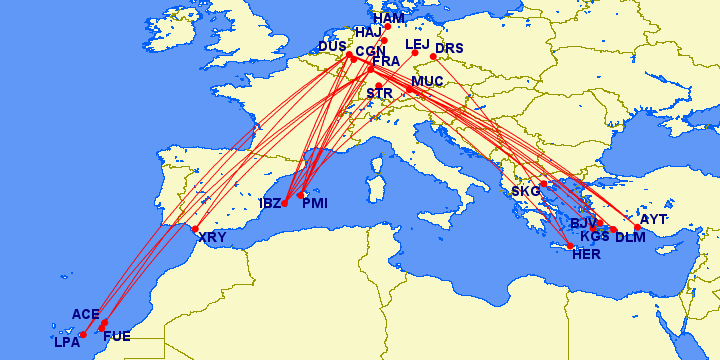 DC-10-30 Charters: 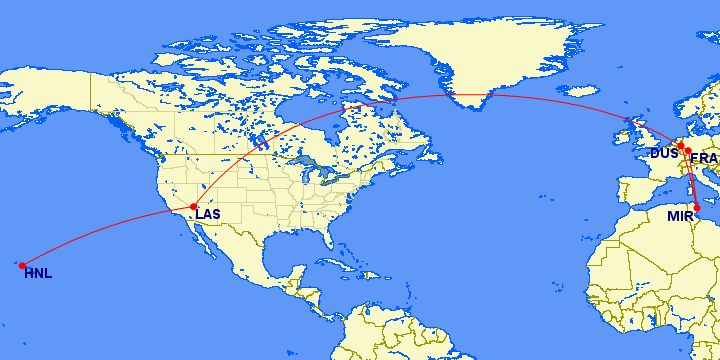 767-300:  767-300 Charters: 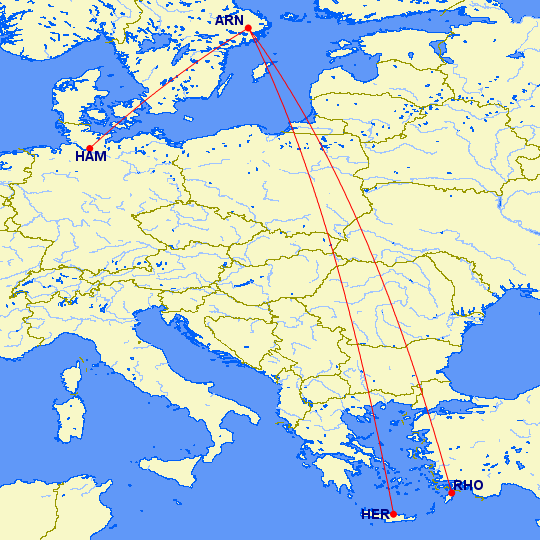 757-200:  " alt=" "] A320 operated by Condor Berlin: 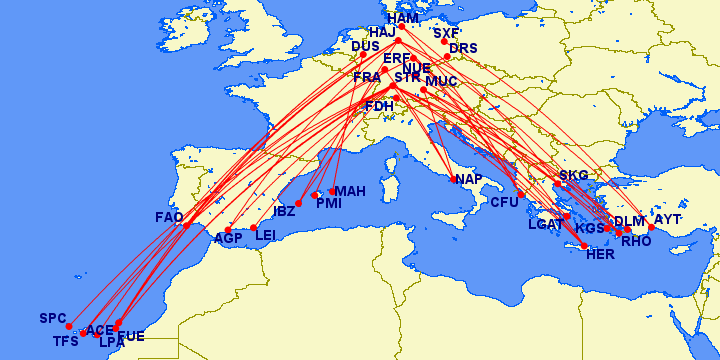 737-300\700 operated by Germania: 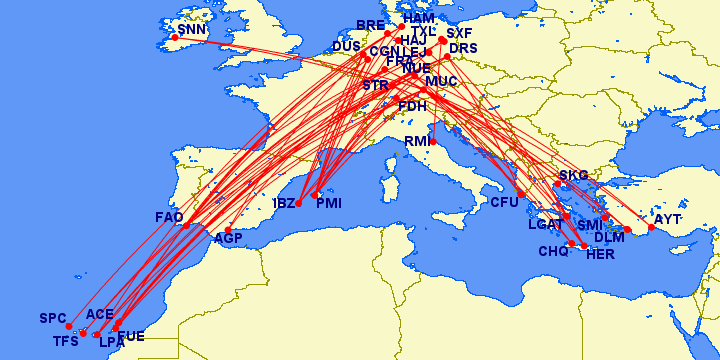 Download Condor Flugdienst 1998 v2 Flightplans Here Download Condor Flugdienst 1998 v2 Flightplans Here |
|
|
|
Post by chasensfo on Jan 8, 2023 3:37:01 GMT -5
\\Tuninter 1998 v2 (08JAN23 modified variations for Micheal Pearson's fleet repaints) Tuninter (1991 - Present) IATA: UG ICAO: TUI CALLSIGN: TUNINTER Tuninter was the predecessor of today's TunisAir Express, based in Tunis (TUN), which operated both leisure charters across Europe and provided scheduled flights on behalf of Tunisair. The carrier was founded in 1990 and began operating in 1991 with ATR-42\72s on domestic services, with the name "Tuninter" translating to "Domestic Airline", with the carrier to this day being the only scheduled domestic airline. Flights began operating on behalf of Tunisair, and the route network extended to nearby destinations like Malta(MLA), though operations remained mostly domestic. The carrier underwent a major expansion starting in 1997, leasing 4 DC-9-30s from JAT and obtaining 1 737-200 over the next year to compete in the lucrative Tunisian charter market with jet flights to Europe. 1 of these DC-9-30s was only operated for a few months in 1997, but the rest of the fleet was still active in 1998 with a wide range of destinations served, mostly focused on France, Italy, Germany, and Switzerland. Most of the DC-9s were operating in full JAT colors but with the titles painted over and "Tuninter" stickers on the fuselage, while 1 DC-9 and the 737-200 wore a simple uniform livery. In addition to the charters and ATR flights, the 737-200 was based in Monastir(MIR) and operated a single weekly roundtrip between MIR and MLA on behalf of Tunisair. That flight is included with these flightplans, but the ATR flights are included with the Tunisair flightplans. Outside of that weekly flight, the 737-200 operated charters across Europe. All destinations were actually served in 1998, but the flight numbers and times are representative. True to charter airlines in the region, I designed the schedule to focus more on continental Europe during the week and with more high-frequency service to closer destinations in Italy and Southern France during the week, though most Italian and French cities see several flights per week. By 1999, the DC-9s went back to JAT, but a 737-300, MD-80, A320, CRJ-900s, and other aircraft would join the fleet over the next several years to continue the leisure flights. In 2000, the carrier was renamed "Sevenair" and independent scheduled international flights were launched. A fatal crash in 2005, caused by an ATR-42 fuel gauge being installed in an ATR-72, brought the airline under scrutiny when the pilots decided to stop flying and pray before impact rather than properly ditch the aircraft. The airline was temporarily banned from operating several international routes, especially to Italy from which most victims were from, for about 2 years. In 2011, the airline was yet again renamed "TunisAir Express", and in 2015, Tunisair announced that it will eventually absorb the carrier, though TunsAir Express is still independently operating in 2021. ATR flights operated on behalf of Tunisair are included in the Tunisair flight plans, as those aircraft operated exclusively for Tunisair. All repaints are completed: AIG DC-9-30 fleet: mpai4fs.com/2023/01/07/tuninter-dc-9-30/FAIB 737-200 fleet: mpai4fs.com/2023/01/07/tuninter-737-200/737-200 scheduled flights for Tunisair:  737-200 charters: 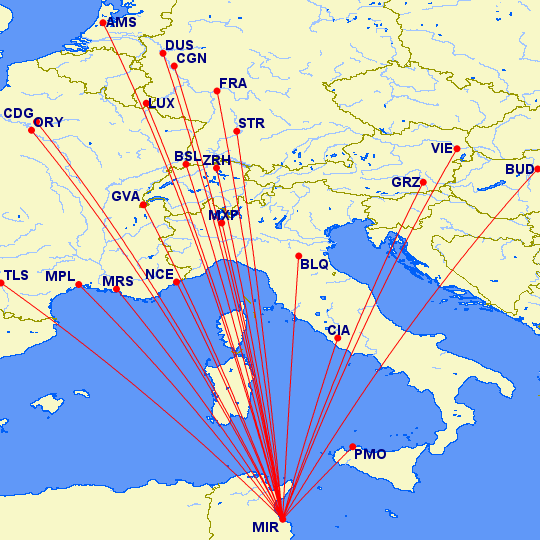 DC-9-30 charters:  Download Tuninter 1998 v2 Flightplans Here Download Tuninter 1998 v2 Flightplans Here |
|
|
|
Post by chasensfo on Jan 10, 2023 3:01:19 GMT -5
\\African Safari Airways 1998 African Safari Airways (1969-2008) IATA: A2 ICAO: QSA CALLSIGN: ZEBRA African Safari Airways (also known as ASA) was a joint venture between Swiss and Kenyan interests, primarily providing leisure charter flights from the Kenyan resort city of Mombasa (MBA), where the company was operationally based though headquartered in Uganda, to points in Switzerland, Germany, Austria, and other Western European nations. African Safari Airways was founded in 1967 under the parent company African Safari Club Group and began operations in 1969 with Bristol Britannia 313\4s, with Zebra stripes on their tails, providing a link from MBA and other points in Kenya and East Africa to points in Europe, aimed at leisure travelers. Early European destinations included London (LGW), Frankfurt (FRA), Basel (BSL), Milan (LIN), Rome (FCO), Madrid (MAD), and Vienna (VIE). Points in Egypt were used as a tech stop en route to and from Europe and the carrier also sold tickets between Egypt and both Keyna and Europe. The initial pair of Britannias were operated until 1972, at which time one was disposed of and the other leased to Indian carrier Air Faisal. It would appear that the carrier may have suspended operations for a few years as the airline did not appear to operate any of its own aircraft again until 1976 when a DC-8-33 was acquired from KLM, meaning any flights operated during this time period were likely flown by other carriers. The DC-8 was introduced in a new livery with Zebra stripes across the fuselage and a red stripe. By this time, Air Faisal returned the Britannia and ASA was operating it in a hybrid livery on ad-hoc cargo services across Europe and Africa for various customers. It is unclear exactly when this cargo operation began. A DC-8-53 was also acquired from KLM in August of 1976 and put into service before the year's end. Services expanded to regularly offer flights to points in Uganda and Rwanda by the time ASA entered the jet age, and Amsterdam (AMS) became a bit of a hub for ASA's flights as KLM provided technical service for the carrier. Rather than connecting cities with "triangle routes", it would appear that ASA preferred "tag-on" routes where aircraft would continue onward from an initial point in Europe like BSL onto a city further North or East like VIE and then return to BSL instead of flying back to Africa. A stretched DC-8-63 arrived in 1962 and brought with it a more conservative version of the jet-age livery with the zebra stripes restricted to the tail. The DC-8-63 flew for about 1 year with its Dutch former KLM registration before being re-registered in Kenya in 1983. The smaller DC-8s were retired and ASA flew on with the lone DC-8-63 until 1987 when a second example was acquired from Seychelles International, briefly operating with its Seychelle's registration in a hybrid ASA livery without the zebra stripes and ASA titles. Having an extra aircraft allowed ASA to begin intra-European passenger charters outside of the busy tourism months and the aircraft was seen all over Europe. In 1988, the second aircraft was registered in Switzerland and the full livery was applied to it. During the late 1980s and early 1990s, SAS took over technical operations for ASA's DC-8s at its engineering center in Stockholm (ARN), but KLM would soon resume technical operations for ASA after the carrier acquired one of its DC-10s in 1993 to replace the DC-8s. A new livery had been introduced in 1992 on the DC-8 fleet and was worn by the first DC-10-30 as well, featuring a thin red strip going across just the rear 2/3 of the aircraft fuselage with a grey belly beneath and a black nose. KLM's first delivered DC-10-30 was also briefly operated in 1994 for just 1 week of service, operating in a full KLM livery with the title stripped and ASA stickers. The full-time resident DC-10 remained ASA's only aircraft into the 20th century and mostly operated straight from MBA to Europe with no North African stopovers. In 1998, ASA started a domestic Kenyan subsidiary known as Skytrails, but both airlines operated separately. ASA's parent company, African Safari Club Group, entered bankruptcy in 1999, and ASA cut back services drastically before retiring its lone DC-10 in 2001 to return to profitability. Starting in 2002, ASA began leasing A310s from German leisure giant Hapag Lloyd, with the first being flown in a hybrid livery. The DC-10 retired from service in late 2001 ahead of the first A310 arrival, and the A310 became the mainstay of the ASA fleet for the rest of its career, with the aircraft receiving technical support from Hapag Loyd in Hannover (HAJ). The A310s were much more efficient and allowed the carrier to expand into smaller markets and grow to include more cities regularly. Flights were suspended in 2008 during a period of violence and unrest in Kenya, with ASA operating a lone A310-300, and the company shut down in 2009, reorganizing as Africa Safari Air, a much smaller regional carrier. Skytrails operated until 2005. In the late 1990s, ASA was operating regular services to a few European airports with its lone DC-10 and was not listed in the OAG. ASA was one of the only small African airlines with a website in the late 1990s, and the website and some photo remarks allowed me to put together the real routes flown in the late 1990s, which were a combination of non-stop services and tag-on flights. Instead of AMS, Zurich (ZRH) was used for maintenance at the time, with Swissair providing the services, so the DC-10 was a regular visitor while AMS was in a lull period with no regular ASA service. Flight numbers and times are representative. In real life, the airline had big ground times and only flew a few times per week. To represent all of the regular late 90s flights flown, the airplane stays rather busy (which was realistic for the summer months at least) and the downtime is spent in ZRH with MBA only being visited between flights normally. These plans are an accurate representation of the airline more or less from 1993 to 2001 more or less, though some cities like LGW, AMS, DUS, etc were served outside of the late 1990s and are not represented here. AIM DC-10-30: library.avsim.net/search.php?SearchTerm=aim_dc1030_african_safari_airways.zip&CatID=root&Go=SearchAIM DC-10-30 1-week 1994 lease KLM hybrid (in case you wish to give it a weekly rotation and make 1994 plans): library.avsim.net/search.php?SearchTerm=aim_dc1030_african_safari_klm_hybrid_297103.zip&CatID=root&Go=SearchDC-10-30:  Download African Safari Airways 1998 Flightplans Here Download African Safari Airways 1998 Flightplans Here |
|
|
|
Post by chasensfo on Jan 11, 2023 23:35:23 GMT -5
\\\Tunisair 1998 v3 (11JAN23; Added A300, 737-200, and 737-500 livery variations for new repaints by Nils Gosselin and proper ATR72 by Micheal Pearson to complete Tunisair) Tunisair (1949 - Present) IATA: TU ICAO: TAR CALLSIGN: TUNAIR Tunisair is the national airline of Tunisia, based in Tunis (TUN), which has been flying since 1949 making it one of the oldest airlines in the Middle East\Africa. A coastal nation in Northern Africa situated on the Mediterranean Sea, Tunisia has had more success in aviation than many African carriers thanks to its proximity to Europe and high levels of tourism. As Tunisia was once a French colony and the language is widely spoken there today, Tunisair has always served France as its most important market and early aircraft and technical support were provided by French interests. Tunisair began operations a few years after WWII in 1949, having been formed the year prior by the Tunisian government, though as a privately owned company. French interests controlled much of the initial investment in the carrier, with Air France owning 30% of Tunisair and providing the carrier with the 3 DC-3s it used to launch flights. Initially, routes focused on the French Mediterranian, Algeria, and Italy while cargo operations were also operated at night between TUN and Marseilles (MRS). The carrier expanded across the Mediterranean and North Africa in the 1950s while the larger and longer-range DC-4 entered the fleet in 1955 bringing the total fleet size to 4 airplanes. By the time the carrier joined the jet age in 1961 with a pair of French SUD Caravelle jets, Air France had grown to own 51% of Tunisair while the Tunisian Government retained 49% of the shares, with the other initial investors having been bought out by the 2 controlling entities. A joint venture with Lufthansa was formed in 1966 and Tunisair expanded jet service to Frankfurt (FRA). A Nord 262 turboprop and a pair of Cessna 402s replaced most of the DC-3s starting in 1969, taking over lower-density regional and trans-Medetranian services. Another pair of Caravelle jets arrived by 1970 and the carrier expanded into Europe. In 1972, Tunisair leased a 707 from SABENA for a new nonstop route to London (LGW), and its own 727-200s began arriving, which were first deployed on new routes to Luxembourg (LUX) and Jeddah (JED). Into the 1990s, rapid scheduled and charter expansion continued to most any major or secondary land-locked major European cities where passengers were likely to holiday on Tunisian beaches. As 737-200s were added for both passenger and cargo expansion, thanks to a 737-200 Combi, Tunisair became one of the largest charter operators in the region, with close to 50% of its operations relying on charters for tour and holiday packages. Through the mid-1990s, the carrier began adding modern 737-500s and Airbus A320s. By 1998, it was common for Tunisair to operate 5-10 extra flights on a scheduled route in a single day during peak tourist seasons for extra capacity. Due to this, Tunisair frequently leased extra aircraft from other companies. During the summer of 1998, AMC aviation of Egypt operated an MD-90 and an A300B4 on behalf of Tunisair, Novair of Sweeden operated a 737-800 for Tunisair, a DC-10-30 was leased from MAS, and a 747-200 was operated by Air Atlanta Icelandic on behalf of Tunisair. While Tunisair was an early operator of the A320 and was modernizing the fleet, several 737-200s and 727-200s were still active into the next century. Only 1 A300B4 was operated by Tunisair itself by the late 1990s, while the first 737-600s and A319s began to arrive. The DC-10-30 flew a lot of charters, especially to JED for Hajj flights, and also had a scheduled weekly flight to JED and a few other European routes. The 747 mostly flew scheduled flights between large Tunisian cities and large French cities, but it flew charters to MAD and Hajj flights to JED also. Some regional scheduled services were operated by Tuninter, which was a charter airline that also operated many independent flights, using ATR72s dedicated to Tunisair flights and a 737-200 that ran a Tunisair route to Malta (MLA) while providing charters flights most of the week for Tuninter itself. The ATR72s wore Tuninter colors in the 1990s before receiving the Tunisair livery in the 2000s. Tunisair stored its 737-600 fleet after the 2020 pandemic and today Tunisair operates nextgen 737s and Airbuses on the majority of its flights, operating still as one of the oldest African airlines. Charter flights to Oslo use OSL (ENGM) instead of FBU (ENFB) as was standard for most charter flights at the time, with FBU at capacity with scheduled traffic near the end of its life. The huge charter network was based on photo evidence and other data to make the flying as realistic as possible. Many of the charters and scheduled flights were in the middle of the night, and some cities like NCE operated as focus cities late at night on weekends with as many as 10 departures in the middle of the night back to back. The leased aircraft wore various liveries, but the rest of the fleet wore the standard livery except for one A320 which wore a special livery promoting the airline's 50th anniversary as did a 737-500 with a decal. Tunisair is alive and well today. Only Tuninter flights operated exclusively for Tunisair are included, with 2 ATR72s. The 737-200, which operated one route on behalf of Tunisair, and DC-9-30s leased from JAT are in the Tuninter flightplans. Flightplans by Miguel Ceballos, charter network by myself. Repaints are all completed, by myself unless otherwise noted: FAIB 747-100 by Michael Pearson: library.avsim.net/search.php?SearchTerm=faib_747-100_tar.zip&CatID=root&Go=SearchAIM DC-10-30 by Jason King (FS9 Native): library.avsim.net/search.php?SearchTerm=aim_dc1030_tunisair.zip&CatID=root&Go=SearchTFS A300B4 by Nils Gosselin (also includes A300-600R fleet): drive.google.com/drive/folders/1vIg9Stp7dsGxouv6I3l8xsSI0atDhnBCTFS A300B4 operated by AMC by myself: drive.google.com/drive/folders/1fVB09bsNByFO0sQaVHzDcbNoEUBbUsef?usp=sharingAIA 727-200 by Micheal Pearson: mpai4fs.com/2023/01/06/tunisair-727-200/FSPX A320 Fleet by Nils Gosselin: drive.google.com/drive/folders/1YiNuZZPCJaeUfZUDW5Ge9jp7xCEZb-biFAIB A320 Fleet by Nils Gosselin: drive.google.com/drive/folders/1OEE4UNuLXjyWA-mX7rIy6lZwqO9omxnCFAIB A320 50th Anniversary livery by myself (FS9 Resolution): drive.google.com/drive/folders/1pkXunbuvhOHNRXsqJyS4KtL0O753v6im?usp=sharingFAIB A319 by Nils Gosselin: drive.google.com/drive/folders/1848iTNCHtJCcPxyzBuaoSmGBWCkA5UMdFSPX A319 Fleet by Nils Gosselin: drive.google.com/drive/folders/1YiNuZZPCJaeUfZUDW5Ge9jp7xCEZb-biAIA MD-90 operated by AMC by Christian Gold (FS9 Native): drive.google.com/open?id=1weOZXUDHEsYZj1xUHrld_MVR2Ae_6NuCFAIB 737-800 operated by Novair by myself: drive.google.com/drive/folders/1AZDhobP-ovwp44KoPT_zWSMCqhVqL7MS?usp=sharingFAIB 737-600 by Nils Gosselin: drive.google.com/drive/folders/17zyDG2vd6W0IIXawmuzpvY8V56ZuuLETFSPX 737-600 Fleet by Nils Gosselin: drive.google.com/drive/folders/1U_mZc6neyLmp72lFL3VCYzZDqKufYj63AIA 737-600 by Federico Permutti (FS9 Native): library.avsim.net/search.php?SearchTerm=ai736tar.zip&CatID=root&Go=SearchFAIB 737-500 fleet by Nils Gosselin: drive.google.com/drive/folders/1R5vaCrTAnApK8WDCya_zkKkuiZRVznW6FAIB 737-200 fleet by Nils Gosselin: drive.google.com/drive/folders/1ollvOjGL8dELKsc5JbVyDOx7TgH72YUEOSP ATR72 Tuninter by Michael Pearson: mpai4fs.com/2023/01/07/tuninter-atr-72-200/TFS A300 + AIA 727-200 + FAIB 737-200\500\A320 by Eduardo Villanueva (1994 fleet; FS9 Native): library.avsim.net/search.php?SearchTerm=tunisair_1994_fleet.zip&CatID=root&Go=Search747-100 operated by Air Atlanta Icelandic: 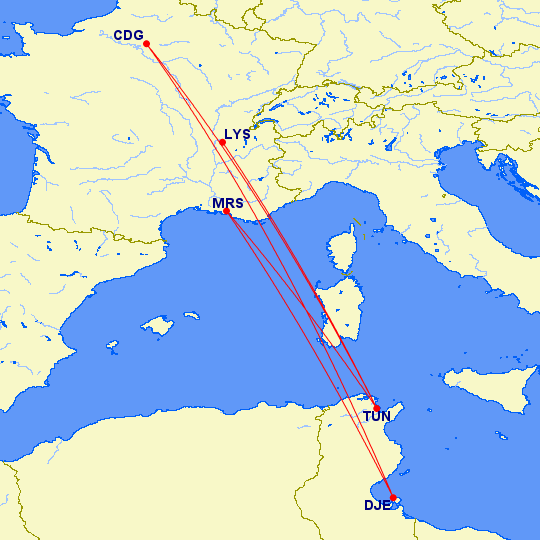 747-100 operated by Air Atlanta Icelandic Charters: 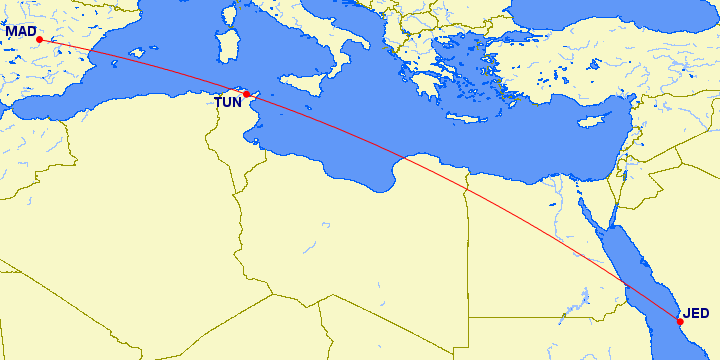 DC-10-30:  DC-10-30 charters:  A300B4: 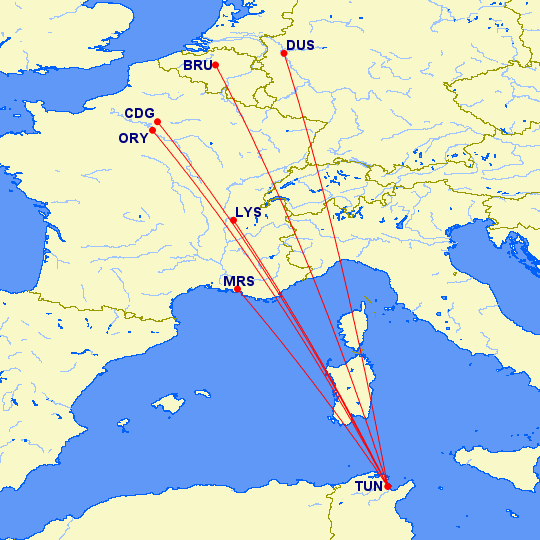 A300B4 operated by AMC Aviation Charters: 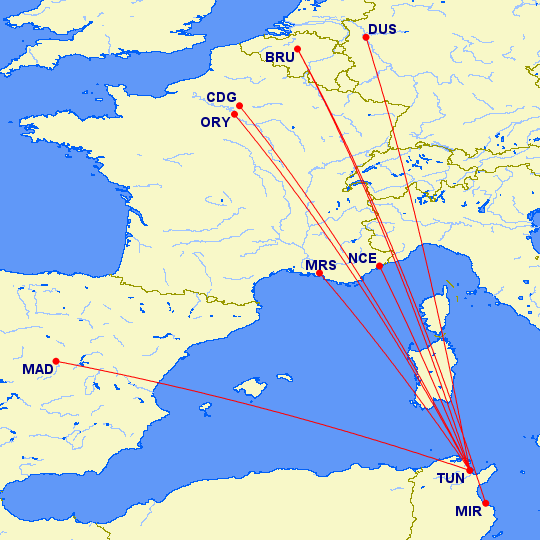 727-200: 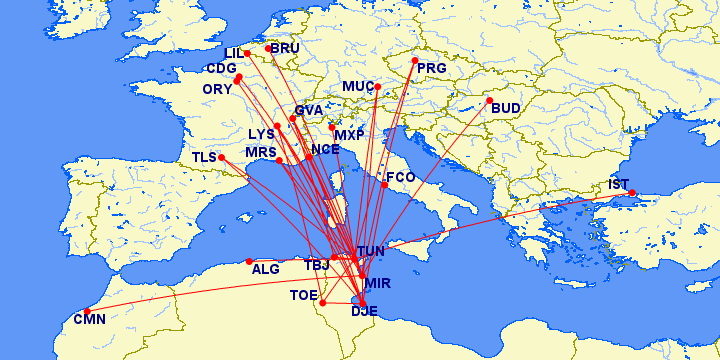 727-200 Charters: 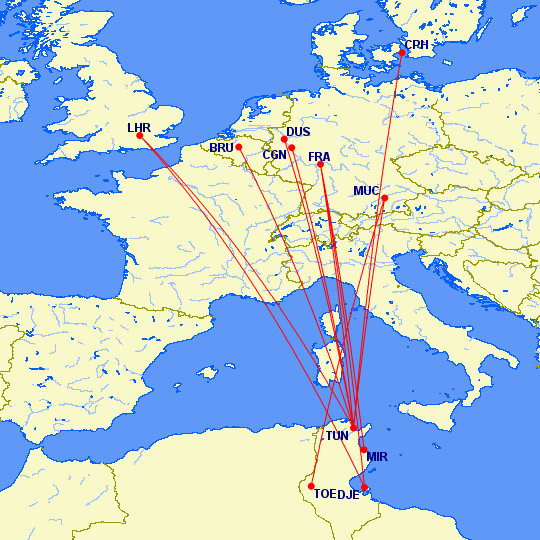 MD-90 operated by AMC aviation: 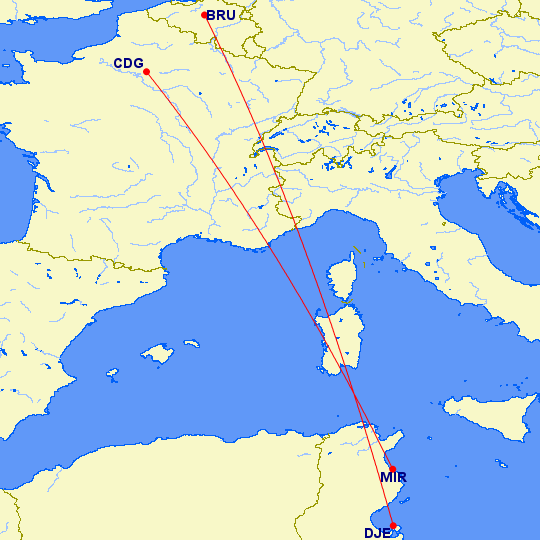 MD-90 operated by AMC aviation charters: 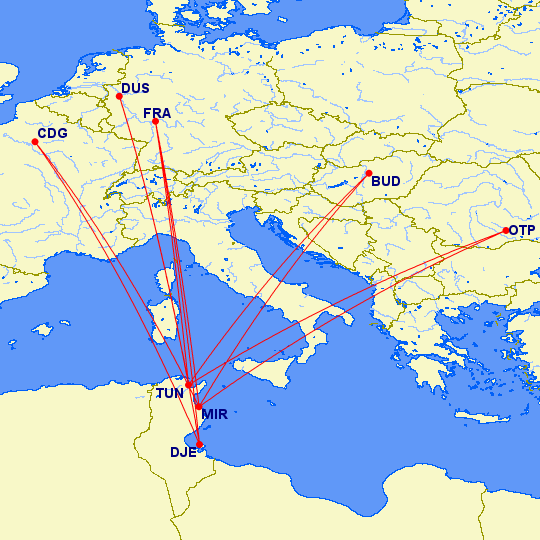 A320: 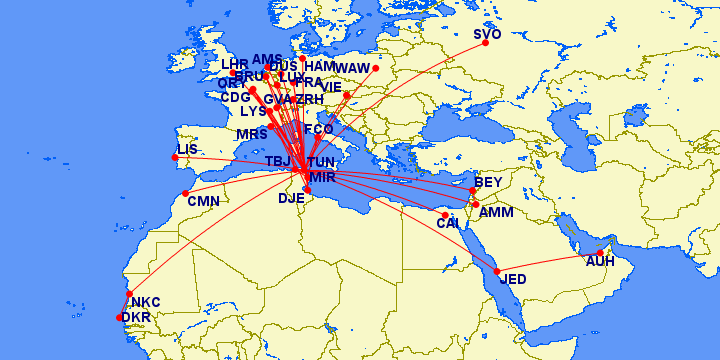 A319:  A319\A320 charters: 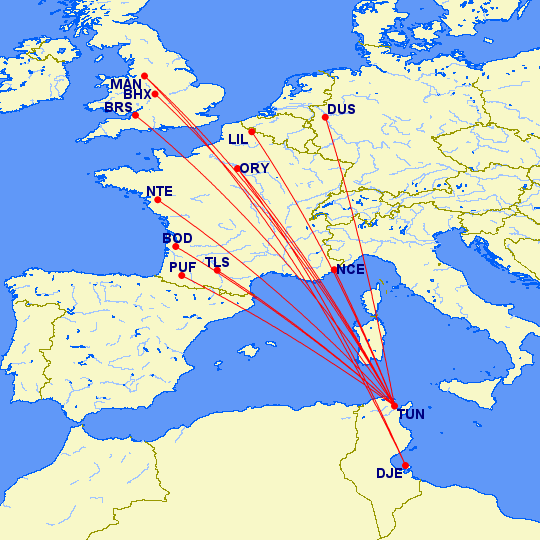 737-200\500\600: 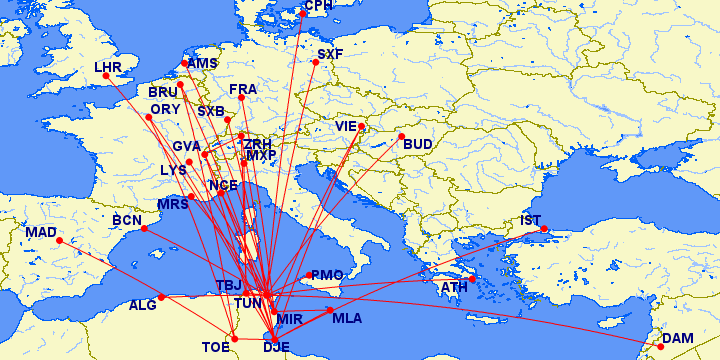 737-200\500\600\800 charters: 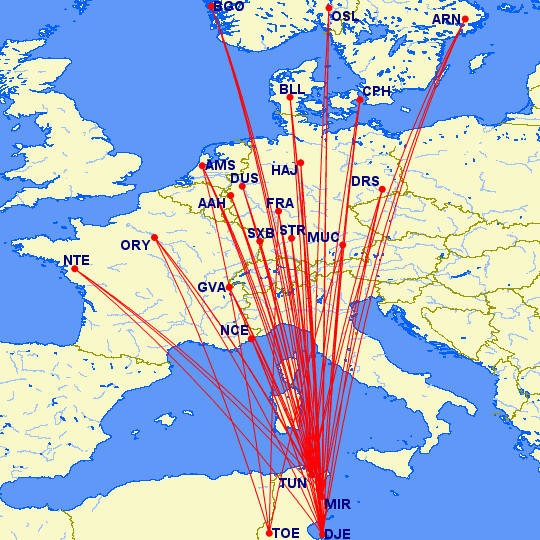 ATR-42\72 operated by Tuninter: 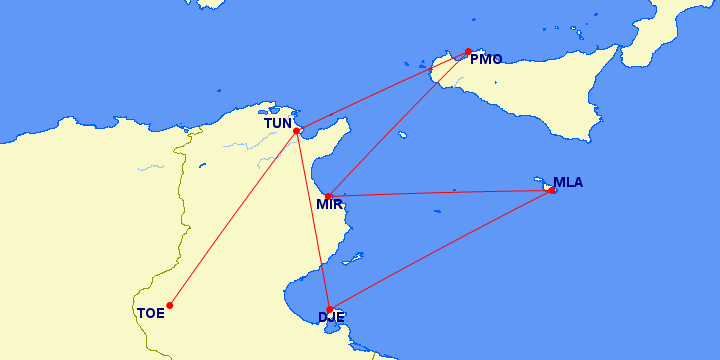 Download Tunisair 1998 v3 Flightplans Here Download Tunisair 1998 v3 Flightplans Here |
|
|
|
Post by chasensfo on Jan 12, 2023 7:07:31 GMT -5
Unless a few surprise variations come out, this should be the last update for Air France beyond repaint links for missing repaints. Air France had a huge variety in the late 1990s, so there are many variations included here. Thanks to several authors (especially Nils Gosselin for taking the time to research livery dates and aircraft they were applied allowing me to accurately adjust the fleet), this colorful chapter in the history of Air France is very well covered, though these plans will take some time to install accordingly (A LITE version will come out in the future). With this update, only the World Cup Liveries (in progress by Raphael Rodrigues after a long pause), the Air Djibouti livery A310, and the Gill Airways Fokker 100 and ATR42 in Air France colors, all repaints are finally completed with great accuracy. Thanks to everyone who made Air France so realistic since v1 years ago. //Air France 1998 v4 (11JAN23; Added livery variations for the L'Aeropostale 737 fleet and much of the regional fleet for repaints by Nils Gosselin, corrected a few livery variation issues thanks to research by Nils). Air France (1933 - Present) IATA: AF ICAO: AFR CALLSIGN: Air France (You may also use AFR and\or AFRX for the following airlines) Air France operated by Air Djibouti (1998-1999) IATA: AF ICAO: DJU CALLSIGN: AIR DJIB Air France operated by L'Aeropostale (1997-2001) IATA: AF ICAO: ARP CALLSIGN: AEROPOSTE FRANCE Air France operated by Gill Airways (1998-2002) IATA: AF ICAO: GIL CALLSIGN: GILLAIR Air France operated by Air Littoral (1986-2003) IATA: AF ICAO: LIT CALLSIGN: AIR LITTORAL Air France operated by Brit Air (1986-2015) IATA: AF ICAO: BZH CALLSIGN: BRITAIR Air France operated by Regional Airlines (1997-2009) IATA: AF ICAO: RGI CALLSIGN: REGIONAL EUROPE Air France operated by Jersey European Airways (1997-2005) IATA: AF ICAO: JEA CALLSIGN: JERSEY Air France operated by Eurowings (1997-1999) IATA: AF ICAO: EWG CALLSIGN: EUROWINGS Air France operated by CityJet (1997 - Present) IATA: AF ICAO: BCY CALLSIGN: CITY-IRELAND Air France operated by Proteus Airlines (1996-2004) IATA: AF ICAO: PRB CALLSIGN: PROTEUS Air France operated by Air Guadeloupe (1995-2001) IATA: AF ICAO: AGU CALLSIGN: AIR GUADELOUPE Air France is the national carrier of France, based in Paris CDG and ORY, and is one of the largest carriers in Europe. The airline was founded shortly before WWII as the union between Air Orient, Air Union, Compagnie Générale Aéropostale, Compagnie Internationale de Navigation Aérienne (CIDNA) and Société Générale des Transports Aériens (SGTA) after a massive merger. With France having territories all across the globe, Air France from the very beginning was constantly expanding with the latest in long-range aircraft to reach points in the Pacific, the Caribbean, Asia, and Africa. Through the 1940s and 1950s, Air France added the latest props and turboprops like the Lockheed Constellations and Vickers Viscount, and joined the jet age in 1960 with the 707 and Caravel. In the 1970s, Air France was one of 2 customers for the world's first supersonic transport(SST), Concorde, taking roughly half of the aircraft with the rest going to British Airways. In 1988, Air France became a very early operator of the A320-100, with Airbus being a French company, and Air France historically was among the first to operate all Airbus types, starting with the A300. Air France also operated most Boeing aircraft, flying most variants of the 727, 737, and 747. Later, 767s and other Boeing jets would join the fleet. Air France merged with long-haul rival UTA in 1990, and with intra-European rival Air Inter in 1994. A subsidiary known as Air France Asie was started with 747s and A340s for flights to Taiwan, but this was discontinued by 1997 with the end of flights to TPE. In 1998, Air France was huge and contracting flying to many operators from several nations and operating with many livery variations. Several aircraft were given "World Cup 1998" decals across the fuselage, with different countries represented by the image on either side of the aircraft. Air France also still had a few A320-100s and 737-200s in the old 70/80s livery(spotted by the stripes on the tail going all the way down to the base rather than there being a "gap" between the stripes and the base of the tail, titles also were different). Concorde only had a single scheduled daily flight between CDG-JFK, with a RON in JFK. However, I have included all 6 of the Air France Concordes doing realistic charters of the era, including a visit to GIG via MIA/TPA for the 1998 World Cup and 2 different around-the-world charters. This package also includes all the regional carriers and affiliate airlines operating Air France flights in 1998, which includes a Caribbean operation with 2 mainline 737-300s and an ATR-72 operated by Air Guadeloupe. The regional carriers had a variety of liveries as well, with some having "house" colors with their own titles(with 2 liveries in some cases like Brit Air) while Air France was in the process of having these carriers transition from the "Air France Air Inter" livery of the early 90s to the mainline Air France colors. Many of the planes in full Air France colors being flown by regional subsidiaries had the name of the operating carrier in Air France font under the windows in the front of the aircraft. In addition, Air Djibouti operated an A310 for Air France to Djibouti and onward to JED, Belair-lle de France operated 727 flights with an Air France flight number(included in independent flightplans) while L'Aeropostale operated several 737-300s in full Air France colors. Interestingly, Air France was operating Fokker 100s mainline in 1998, having inherited them from Air Inter. These aircraft were transferred to Regional Airlines in 1999. Air France was no doubt one of the most eclectic carriers at the time! Boeing 777s had just joined the fleet in small numbers, but the airline was not yet flying A330s, despite Air Inter having flown the A330-300 prior to the merger. Air France would go on to join the SkyTeam alliance, and in 2003, merge with KLM to form Air France-KLM. Air France was later an early operator of the Airbus A380, but the aircraft were retired in 2020 due to the COVID-19 pandemic. Air France today is still a huge global airline with a modern fleet. Don't forget to download Belair-lle de France to complete Air France! And note that the aircraft.cfg is set up as "[livery](Operator)", ask here if you have any questions. Also keep in mind that, again, only some A320-100s and 737-200s still had the old livery with the stripes going all the way down to the base of the tail, all other planes should have a gap between the stripes and the base of the tail to represent the new colors. Also, note that Air France was the only major airline in the OAG that listed every regional flight as mainline and did not provide a legend as to which flight numbers were operated by which affiliate airline. As such, for example, you might see mainline Air France Fokker 100s flying routes flown by Gill Airways or vice versa. This also means that Air France 737-300s were not differentiated from L'Aeropostale 737-300s. Why Air France decided not to break down its affiliates, I am not sure. I was able to make plenty of educated assumptions like LCY flights being flown by Cityjet and whatnot, but I apologize if you find any inaccuracies, I did the best I could. Note that Brit Airways received the mainline Air France Fokker 100s in 1999, so there are no variations for them in these plans with the aircraft flying for mainline Air France. Air Littoral's Fokker 100s and CRJs were not flying for Air France at the time. The CRJs were flying on behalf of Team Lufthansa at the time (even in the full Air Littoral livery), and the Fokker 100s were flying independently. Please give Concorde "ASST, AFR" parking codes please to allow for proper parking in CDG and JFK. Besides the special liveries, some A320s and 737-200s are still in the old 80s livery in these plans and I have now included the few ex-Air Inter aircraft that still wore the "Air Inter Europe - Air France" titles in 1998. I have tried to name the paints by Nils after the appropriate repaint, but Ttools wouldn't compile with the 1999 special A319 and the 1998 world cup sticker 777 as the titles were over 100 characters, so I had to shorten them. Be careful for that. It'll take some time to install all these planes, but then France will look amazing. Some aircraft have long ground times in Paris like real life to get the fleet size right and should populate the hangars nicely. The following repaints are available: FAIB 747-400 fleet by Nils Gosselin: drive.google.com/drive/folders/1qaVxea4eDwKauZF7I_Okd7_JB1-Q-JrrFAIB 747-300M fleet by Nils Gosselin: drive.google.com/drive/folders/1ZX8Y5a1LtMR7rBZ4GI-VenMV-dPeD4TTFAIB 747-200 fleet by Nils Gosselin: drive.google.com/drive/folders/1PqWUpanstzgwqDwkr-y3rCfzZIIWQkHAFAIB 747-200 fleet by Micheal Pearson (FSX Native): drive.google.com/drive/folders/1Pc-AOrPy1RFnHR4BLKInde80UmAfLED1FAIB 747-100 fleet by Nils Gosselin: drive.google.com/drive/folders/1Qs6sOSmd2TGEWchrvGmZwWcrXO3qCVIGFAIB 747-100 fleet by Micheal Pearson (FSX Native): drive.google.com/drive/folders/1Pc-AOrPy1RFnHR4BLKInde80UmAfLED1FSPX A340-300 fleet by Nils Gosselin: drive.google.com/drive/folders/1iyknb-BeoavJUN5zSfvc4yoIMN2dHe1RFSPX A340-200 fleet by Nils Gosselin: drive.google.com/drive/folders/1ceYU4ACdUXdFMoq7JScj0pknrITWxVpjFSPX A340-200 fleet by Micheal Pearson: drive.google.com/drive/folders/1Pc-AOrPy1RFnHR4BLKInde80UmAfLED1FSPX 777-200 fleet by Nils Gosselin: drive.google.com/drive/folders/1U3x3Sj24ra02j4n25wjbMVGFTLmDNab2TFS 777-200 (paint over Skyteam logo for 1998; FS9 Native): library.avsim.net/search.php?SearchTerm=ai772afr.zip&CatID=root&Go=SearchFSPX 767-300 fleet by Nils Gosselin: drive.google.com/drive/folders/1JiUo7b7ZfY6xUJJpQAb3wNSkp7roiReoFAIB 767-300 fleet by Micheal Pearson: drive.google.com/drive/folders/1Pc-AOrPy1RFnHR4BLKInde80UmAfLED1TFS A310-300\200: www.juergenbaumbusch.de/?p=11948FSPX A321\320\319 fleet by Nils Gosselin: drive.google.com/drive/folders/1j4z6XQOx525lJs1gXmQgmBm9hYLLJLOMFAIB A321 fleet by Nils Gosselin: drive.google.com/drive/folders/149Yi9MAaygLc4O3AEP7146USfvXbOJ0hFAIB A320 fleet by Nils Gosselin: drive.google.com/drive/folders/1ZPxp7p0JoxDC47tI3eW4hSdvzQSb1hMWFAIB A320 Air Inter Europe by Nils Gosselin: drive.google.com/drive/folders/1j0STCe9NHXyL1xao1BCkxXnRFyndDXD8FAIB A319 fleet by Nils Gosselin: drive.google.com/drive/folders/1ZLp7NOmz4x0h8dm8-B1ym9v3IiGWBxngFAIB A319 Air Inter Europe by Nils Gosselin: drive.google.com/drive/folders/16duN8Vkfwc6vQVYW5MuYEBd_f43kmgsKFAIB 737-500 fleet by Nils Gosselin: drive.google.com/drive/folders/1kfL_BiBRqylj4-sleKeNxbCIWmgMcg5oFAIB 737-300 fleet by Nils Gosselin: drive.google.com/drive/folders/1-MPyIx1ltlLqqHkh5F7F8SxukkQslNK1FAIB 737-300QC operated by L'Aeropostale fleet by Nils Gosselin (some aircraft titles need to be shortened to compile): drive.google.com/drive/folders/1i9n6c_l2QM0otsTg1hVeaqAsRy07aihxFAIB 737-300QC operated by L'Aeropostale by Jonathan Alba\Henrique Martins: drive.google.com/drive/folders/12UTT1XnfBM3uM6eE2Fu-V8tdGyu4-hEp?usp=sharingFAIB 737-200 fleet by Nils Gosselin: drive.google.com/drive/folders/1Ci-A5KLSbuvSXVCkOfriGaNT_KZiR7--FAIB 737-500\737-300\737-200 (FS9 Native): library.avsim.net/search.php?SearchTerm=air_france_uta_fleet_1992-93.zip&CatID=root&Go=SearchAIA Fokker 100 by Nils Gosselin: drive.google.com/drive/folders/1Q4KWHYuQQfPDlWq3nOrcr94JhH_x9jBkAIA Fokker 100 Air Inter Europe by Nils Gosselin: drive.google.com/drive/folders/1rYWA7DiX6r-aJj3NKgt3Zg0bY1NCgvi1AIA Fokker 100 operated by Brit Air by Nils Gosselin (optional in lieu of mainline aircraft): drive.google.com/drive/folders/1BzADciQP0v5Rf2m7OJoZL4OowHMFOcMZAIA Fokker 70 operated by Air Littoral fleet by Nils Gosselin: drive.google.com/drive/folders/1voe6u9zMG0FMM8YDlEY913M4x-fupHFuAIA Fokker 70 (paint over engine logos and "Regional" titles; FS9 Native): library.avsim.net/search.php?SearchTerm=aif70rae.zip&CatID=root&Go=SearchAIM CRJ-100 operated by Brit Air by Nils Gosselin: drive.google.com/drive/folders/1hgpjA9xcr9ob_baA4cWfNonagDOF2IYiOSP ATR42 operated by Air Littoral fleet by Nils Gosselin: drive.google.com/drive/folders/1qMgNWrR7yIn_HeVzU5pySiOfDq2VzyZ0OSP ATR42 operated by Brit Air (Air France livery): drive.google.com/drive/folders/1CzmDdDgJ_WUVCs6QKCUZaJhnzyyxVLcrRegional Fleet; FMAI BAe-146-100\200\300, AIM ERJ-145\CRJ-100, JBAI Do328, OSP ATR72\42, TFS Saab 200, HTAI B1900D as well as a 2nd version of the L'Aeropostale operated FAIB 737-300QC (FS9 Native): library.avsim.net/search.php?SearchTerm=air_france_regionals_pack_1998.zip&CatID=root&Go=Search747-400 Combi: 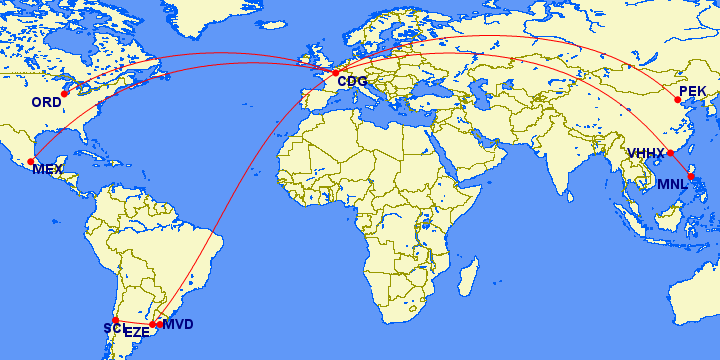 747-400: 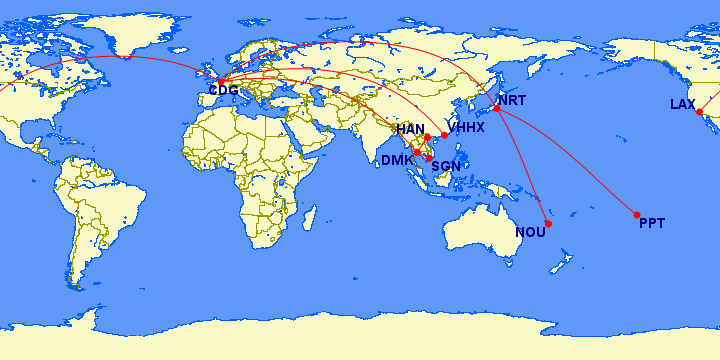 747-300: 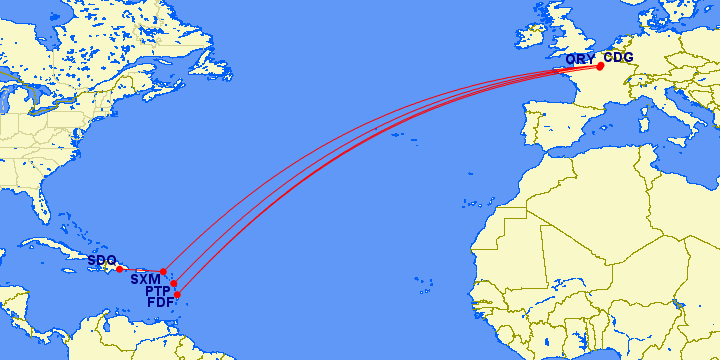 747-100\200: 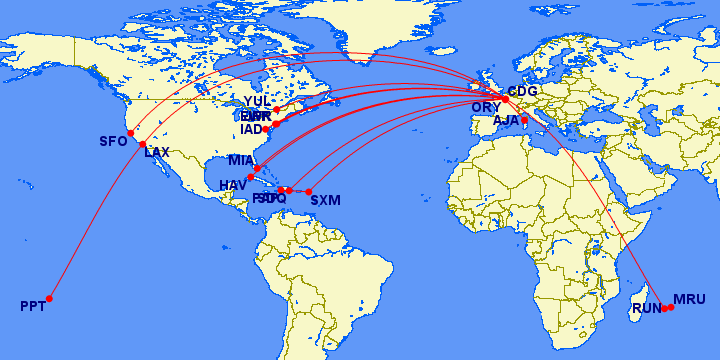 A340-300: 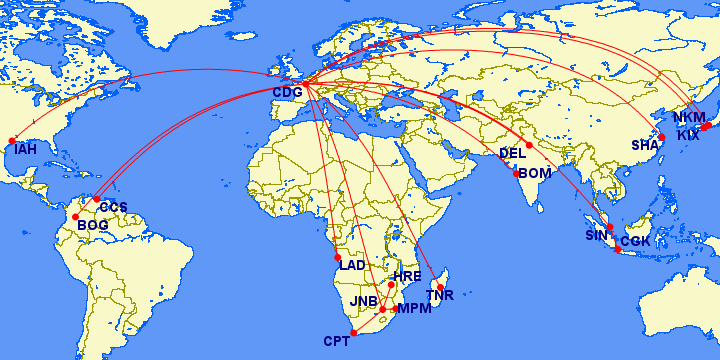 A340-200: 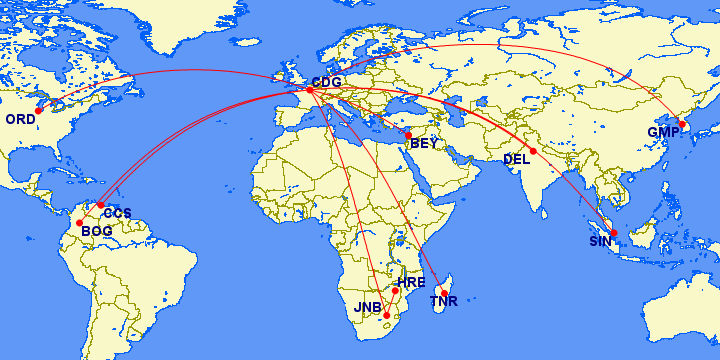 777-200: 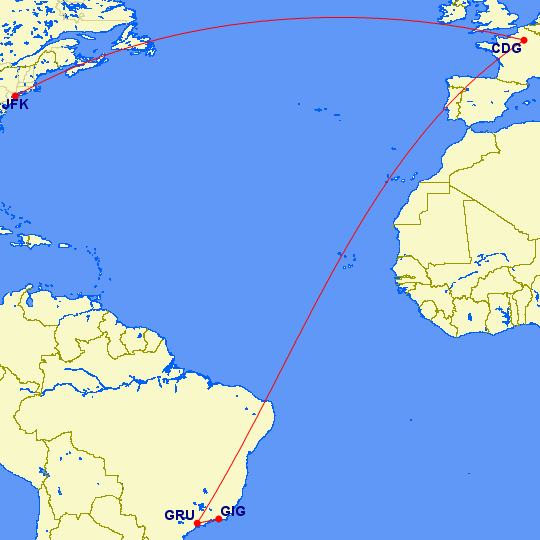 767-300:  Concorde scheduled flights: 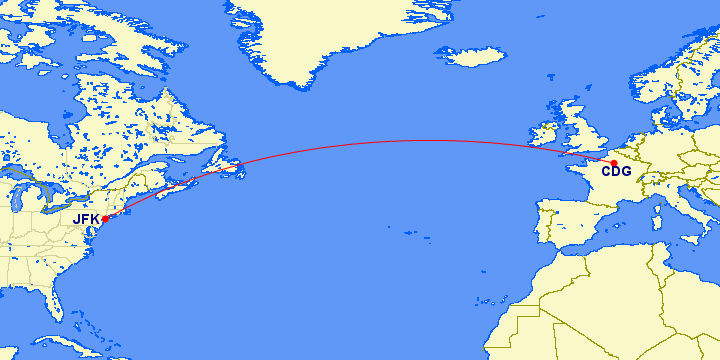 Concorde charters:  A310-200\300: 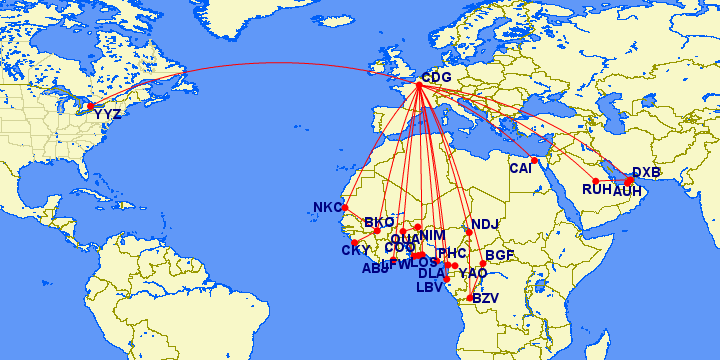 A310-300 operated by Air Djibouti: 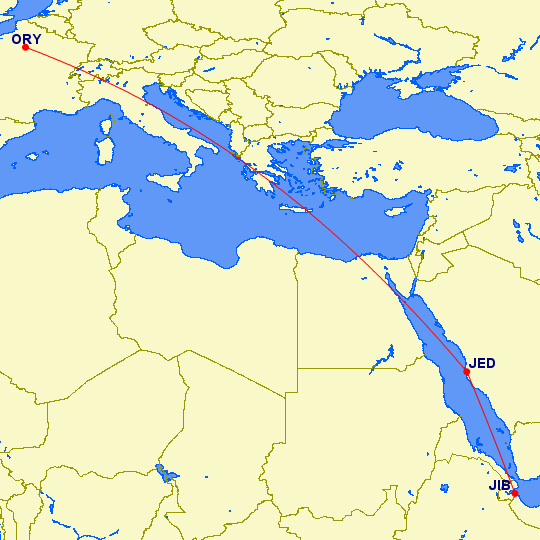 A321: 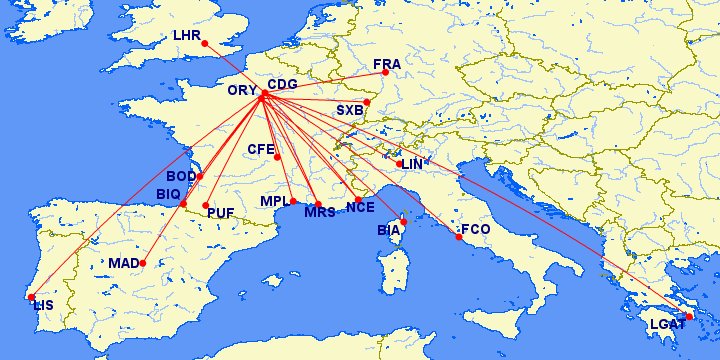 A320-100\200:  A319: 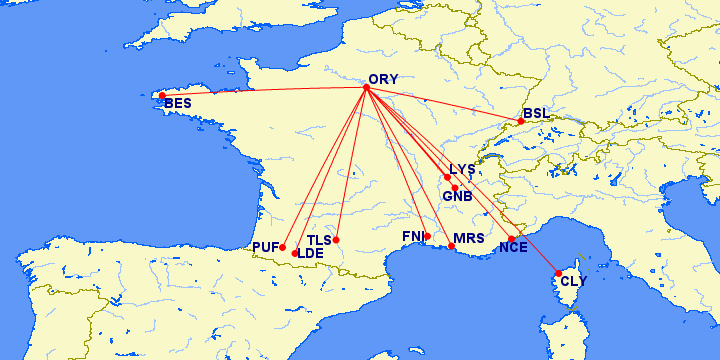 737-500: 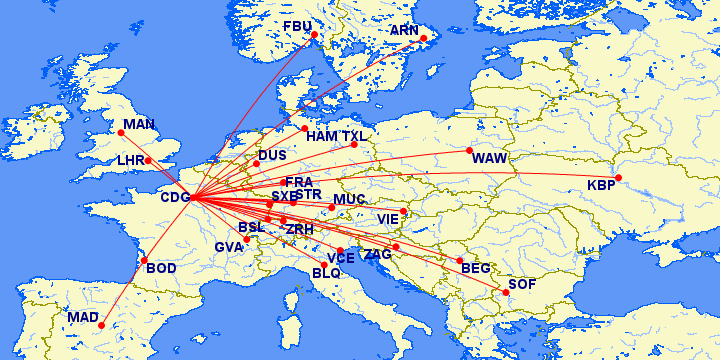 737-300 (includes flights operated by L'Aeropostale): 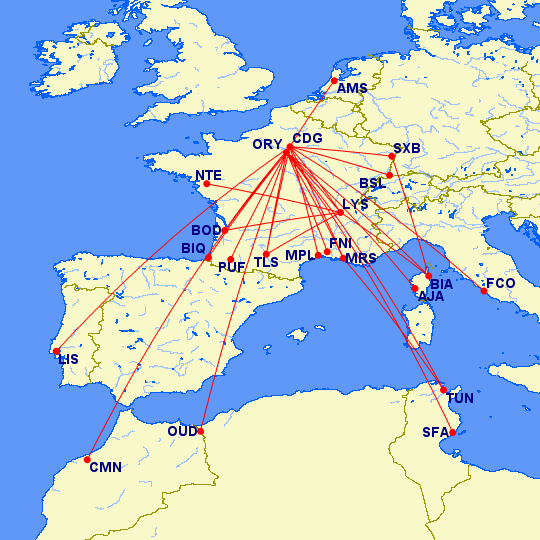 737-300 Caribbean:  737-200: 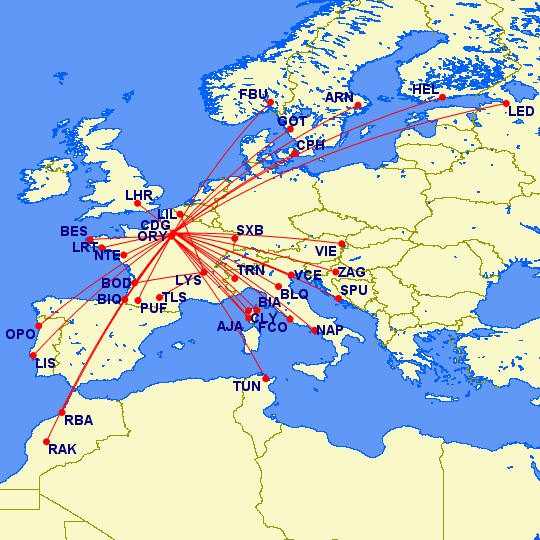 Fokker 100 (includes flights operated by Gill Airways): 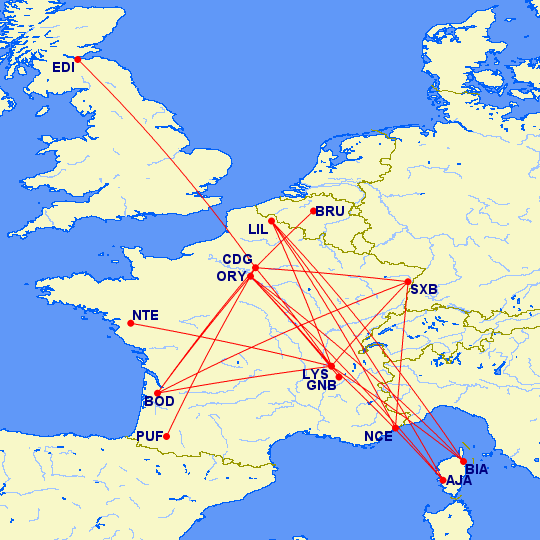 Fokker 70 operated by Air Littoral:  BAe-146-100\200\300\Avro RJ70\85\100 operated by Jersey European Airways\CityJet\Eurowings: 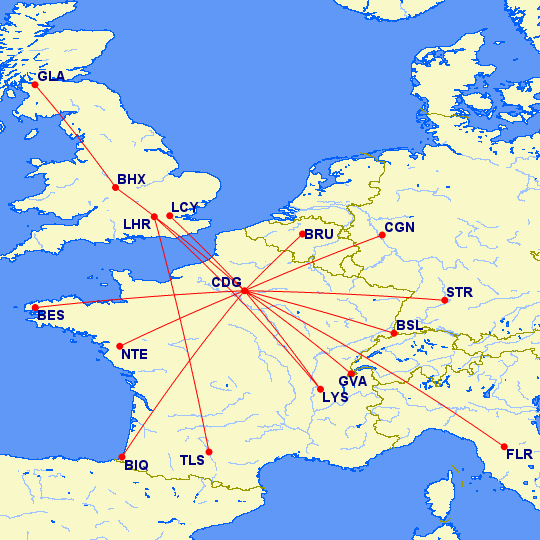 ERJ-145 operated by Regional Airlines: 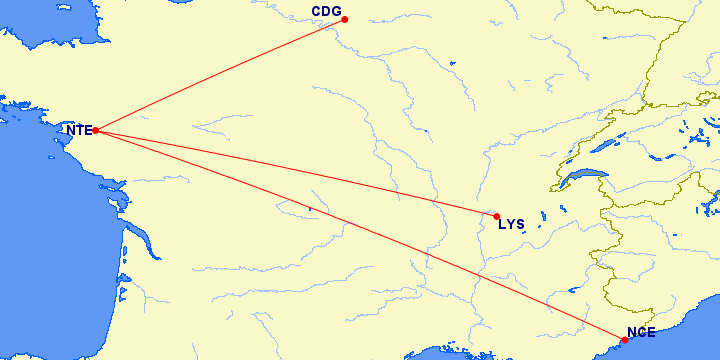 CRJ-100 operated by Brit Air: 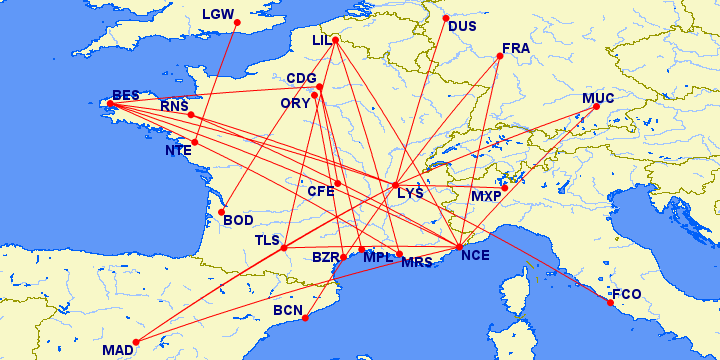 ATR-72 operated by Brit Air: 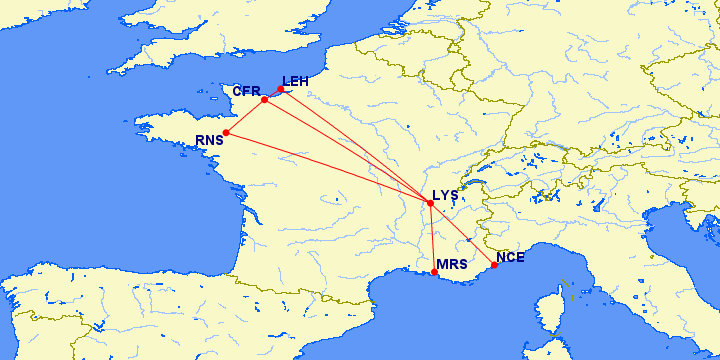 ATR-72 operated by Air Guadeloupe:  ATR-42 operated by Brit Air: 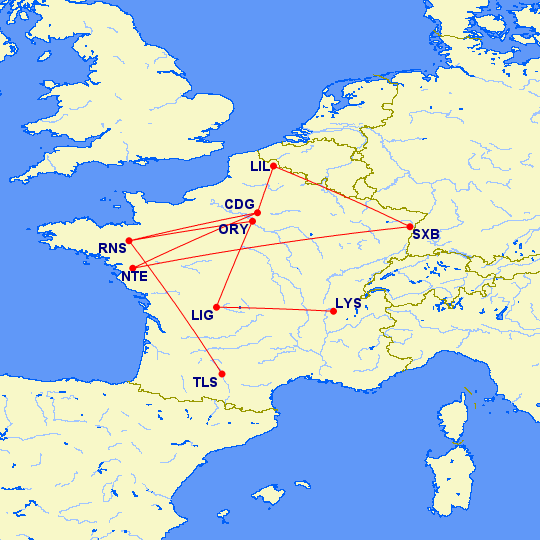 ATR-42 operated by Gill Airways: 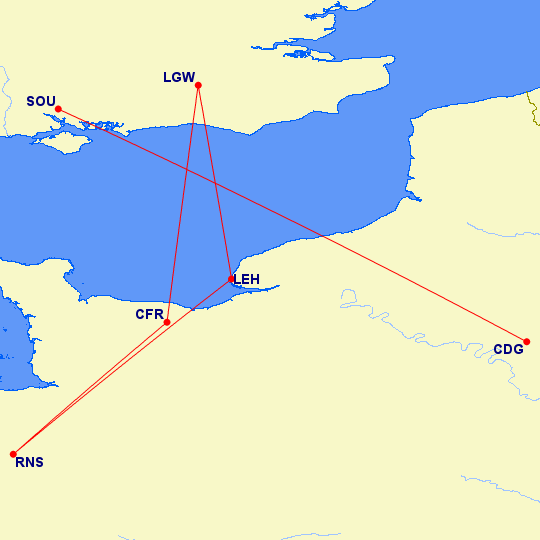 Saab 2000 operated by Cityjet\Regional Airlines: 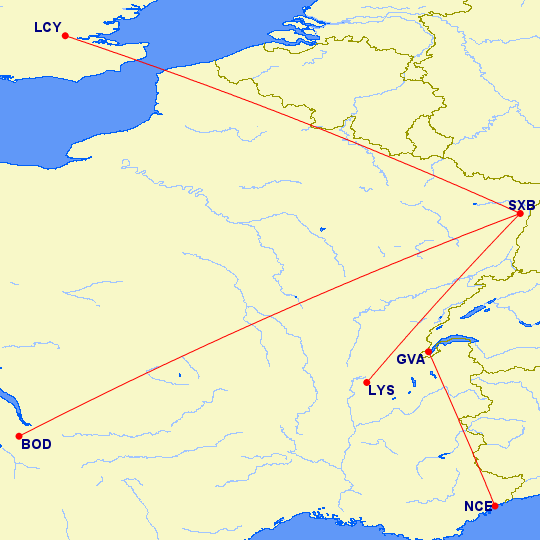 Do-328 operated by Proteus: 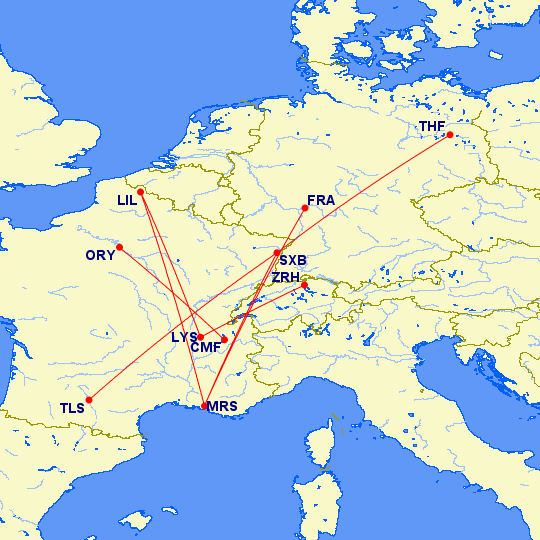 B1900D operated by Proteus: 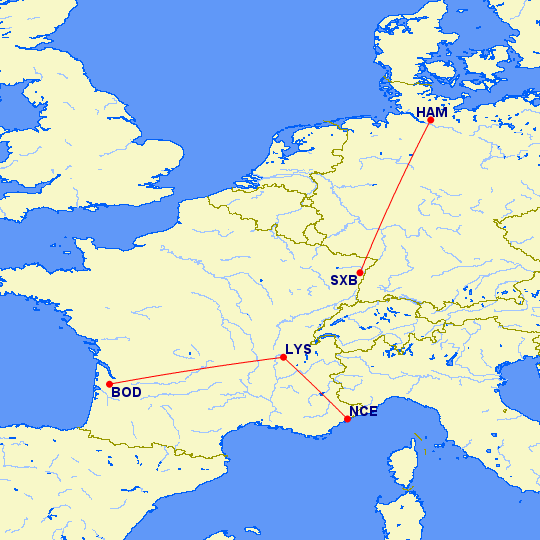 Download Air France 1998 v4 Flightplans Here Download Air France 1998 v4 Flightplans Here |
|
|
|
Post by chasensfo on Jan 13, 2023 6:24:58 GMT -5
**Repost because there were big changes 24 hours after posting*** 13JAN23; All missing repaints were completed thanks to Florian van der Kleij (who also provided me with the 'Little Europe' special lost in the Avsim hack to temporarily host), I then realized that another Florian did fleet repaints for these aircraft and added more variations accordingly along with his repaint links. I made a 1997 version of Ranmori's 1993 paint (star alliance badge), and now Lufthansa's regional fleet for the 1990s is completed. DHC-100\200 now split since TFS offers a -100 and -200 model of the DHC-8. I also found which routings Air Littoral flew the CRJs on and removed those flights from the CityLine CRJs so Air Littoral pops up in the right cities now only. Lots of ground time for that fleet as they were transitioning to Lufthansa from Air France (CRJ Air France flights paused in 1997). \\Lufthansa Regionals 1998 v3 (13JAN23; Added livery variations by Nils Gosselin and Florian van der Kleij, added several CRJs operated by Air Littoral (house livery aircraft and 1 more Team Lufthansa livery), added a missing DHC-8-300 each to both operators (both in house colors), split up DHC-100\200 to use specific models, re-did CRJ plans with new information on Air Littoral routes, repaint links now completed) Lufthansa operated by CityLine (1992 - Present) IATA: CL ICAO: CLH (also use DLHX for parking) CALLSIGN: HANSALINE Team Lufthansa operated by Contact Air (1992-2011) IATA: 3T ICAO: KIS (also use DLHX for parking) CALLSIGN: CONTACT AIR Team Lufthansa operated by Cimber Air (1992-2004) IATA: QI ICAO: CIM (also use DLHX for parking) CALLSIGN: CIMBER Lufthansa operated by Debonair (1998-1999) IATA: 2G ICAO: DEB (also use DLHX for parking) CALLSIGN: DEBONAIR Team Lufthansa operated by Augsburg Airways (1997-2013) IATA: IQ ICAO: AUB (also use DLHX for parking) CALLSIGN: AUGSBURG AIR Team Lufthansa operated by Rheintalflug (1998-2002) IATA: WE ICAO: RTL (also use DLHX for parking) CALLSIGN: RHEINTAL Team Lufthansa operated by Air Littoral (1998-2000) IATA: FU ICAO: LIT (also use DLHX for parking) CALLSIGN: AIR LITTORAL Lufthansa is the national airline of Germany, based in Frankfurt (FRA), and today it operates a streamlined regional network under the "CityLine" banner. However, Lufthansa once had a wide variety of air carriers operating its regional and commuter services. Prior to the early 1990s, Germany had dozens of small carriers operating regional routes independently, with some of these carriers such as Ostfriesische Lufttaxi (OLT), the predecessor to CityLine, having been founded as early as the 1950s. In 1992, Lufthansa made the decision to purchase OLT, rebranding the carrier as CityLine, and signed agreements with other carriers such as Contact Air and Danish carrier Cimber Air to operate aircraft under the Lufthansa franchise. Initially, CityLine aircraft wore the full Lufthansa livery while the other carriers mostly wore a blue-tailed livery with a modified Lufthansa logo, though a few aircraft from other carriers did briefly wear Lufthansa colors. In the mid-1990s, the "Team Lufthansa" brand was created and non-CityLine carriers wore a mix of independent colors and a Team Lufthansa livery with the EU flag on the tail. Initially, CRJ-100LRs (of which CityLine was a very early customer), Fokker 50s, DHC-8-100\200s, and ATR42s made up most of the regional fleet for Lufthansa. In 1994, Avro RJ85s began joining the CityLine fleet with 18 examples eventually being added and the CRJ-100LR fleet grew to 35 airframes. By this time, the airline also had hubs in Munich (MUC), Berlin (TXL), and Dusseldorf (DUS) with focus cities all across Germany. In 1997, CityLine transferred its Fokker 50 fleet to Contact Air, which in return gave up its DHC-8 fleet. That same year, Lufthansa began an expansion of Team Lufthansa, first signing Augsburg Airways to a DHC-8-100\200\300 contract followed in 1998 by a DHC-8-300 contract with Austrian Rheintalflug, a CRJ-100LR contract with French carrier Air Littoral and a BAe-146-200 contract with English carrier Debonair. The Lufthansa regional network was huge by this time, stretching all across Central, Eastern, and Western Europe as well as the Mediterranean and the Nordic regions. CRJ-100LRs and Avro RJ85s made up the majority of the network and performed most of the international flights. 2 CityLine CRJ-100s wore special liveries promoting regional destinations. The Debonair, Air Littoral, and Rheintalflug contracts were short-lived and the services of all were ended in 2002, very soon after Rheintalflug briefly flew ERJ-145s for Lufthansa. Some of the carriers continued into the 2010s, at which time the surviving carriers were consolidated into CityLine or shut down. CityLine grew to operate A319s and A320s for Lufthansa as well as A340-300s on long haul routes to places like San Jose (SJC) and Tampa (TPA) not served by Lufthansa mainline, but the long haul operation was shut down during the 2020 pandemic with many CityLine long haul markets losing all Lufthansa service. Today, CityLine is still active as a major presence in Germany and Europe. Flightplans by Vireak Ball and myself. Note, these plans include all Lufthansa-coded regional flights. Flights operating independently but under codeshare from carriers like Air Dolomiti, Air Baltic, and Eurowings are available separately. Independent flights not associated with Lufthansa operated by Augsburg Airways, Air Littoral, Debonair, and Cimber Air are also available separately. NOTE: The Fokker 50s by @luddo66x (and some of his other paints) are a mix of .bmp and .DDS. You can NOT have .bmp and .DDS textures together or the liveries will show up wrong, you also need to be careful as he has renamed some of the texture files possibly by mistake. Make sure you have .DDS OR .BMP, not both, and that you delete the Alpha channels that are fully "blacked out" on the Fokker 50s or they won't look right in P3Dv4\5 with PBR models. It'll be some work to install them accordingly as he made 11 repaints for that fleet. Note that Air Littoral's CRJ fleet was only flying for Lufthansa in 1998 and not Air France, so all house livery CRJ-200s are included in these plans. All repaints are completed. The following textures are available: FMAI RJ85 CityLine (FS9 Native): library.avsim.net/search.php?SearchTerm=aiar8clh.zip&CatID=root&Go=SearchFMAI BAe-146-200 Debonair by Ludovic TRILLES: drive.google.com/drive/folders/1jWyquL4F6pEjjUDIou_IEfaSMEU2YRawAIM CRJ-100 CityLine standard by Ranmori Scythe (I added Star Alliance logo): drive.google.com/drive/u/1/folders/1bn8V6f3g2Z-8KYP79SxYJS4jACjlPo3dAIM CRJ-100 CityLine '25th Canadair Jet' by Florian van der Kleij: drive.google.com/drive/folders/1SQq4TuHt2gPb7YgU-uDqICAaRmuGiw3XAIM CRJ-100 CityLine'Little Europe' by Denis Schranz lost to Avsim hack): drive.google.com/drive/u/1/folders/1Y8DEoPLSJ0Ke1D_eSpSLGcq6N4QN6sA9AIM CRJ-100 Air Littoral fleet by Nils Gosselin: drive.google.com/drive/folders/1bTUPNRoti6BHOrv1ZInKZ9qN3esyuNKEAIM CRJ-100 Air Littoral Team Lufthansa livery by Florian van der Kleij: drive.google.com/drive/folders/1SQq4TuHt2gPb7YgU-uDqICAaRmuGiw3XAIM CRJ-100 Air Littoral Team Lufthansa livery by RetroAI member ludo66x: drive.google.com/drive/folders/1OARmM1zlwJFZqb27UQuAfO8xasTjhMMwNAAI Fokker 50 CityLine by Ranmori Scythe (not required): drive.google.com/drive/u/1/folders/1aP5BlE92I0LsD3V47ucuSsWRrA8_GxOPNAAI Fokker 50 Contact Air Fleet by Ludovic TRILLES: drive.google.com/drive/folders/1LDqL5fW-fg5csucynxOG4O7VTZF6wba1NAAI Fokker 50 Contact Air by Florian van der Kleij: drive.google.com/drive/folders/1SQq4TuHt2gPb7YgU-uDqICAaRmuGiw3XTFS DHC-8-100/200/300 Ausburg Airways by Florian van der Kleij: drive.google.com/drive/folders/1SQq4TuHt2gPb7YgU-uDqICAaRmuGiw3XTFS DHC-8-300 Augsburg Airways (FS9 Native): library.avsim.net/search.php?SearchTerm=aub_dash8_300.zip&CatID=root&Go=SearchTFS DHC-8-300 Rheintalflug by Florian van der Kleij: drive.google.com/drive/folders/1SQq4TuHt2gPb7YgU-uDqICAaRmuGiw3XTFS DHC-8-300 Rheintalflug by Ludovic TRILLES: drive.google.com/drive/folders/19y-d7rifGOAgLMR_n8_HOTSIC-hsjdQcATR42 Cimber Air Fleet by Florian van der Kleij: drive.google.com/drive/folders/1SQq4TuHt2gPb7YgU-uDqICAaRmuGiw3XATR42 Cimber Air Fleet by Ludovic TRILLES: drive.google.com/drive/folders/1a0fJ4_Wqtdk1fcC-iLUmXUtMfCHunN5xTFS DHC-8-100 Augsburg Airways by Ludovic TRILLES: drive.google.com/drive/folders/1H3pjABNYG2QO--_XTss3igC7xU_teZc1Avro RJ85\BAe-146-200 operated by CityLine\Debonair (Keiv flights used KBP not IEV, that's an error): 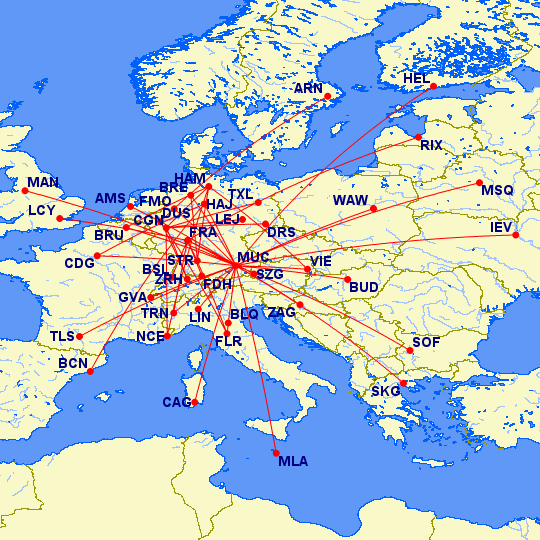 CRJ-100LR operated by CityLine: 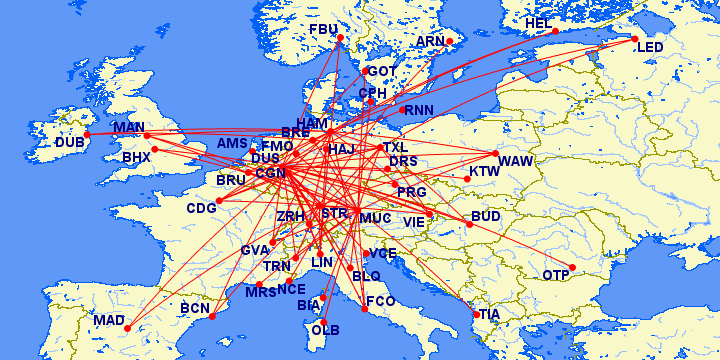 CRJ-100ER operated by Air Littoral: 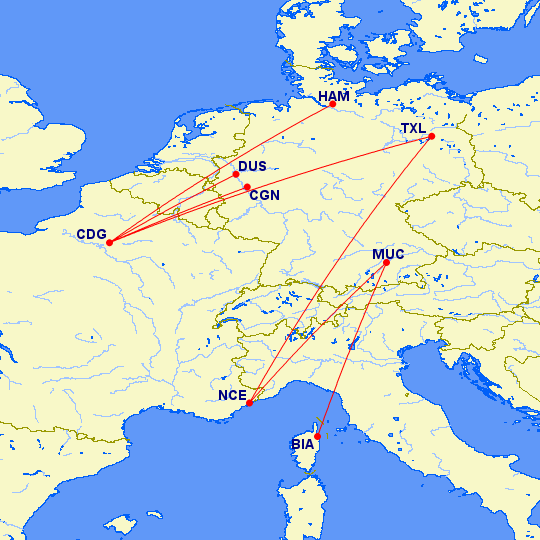 DHC-8-300 operated by Augsburg Airways\Rheintalflug: 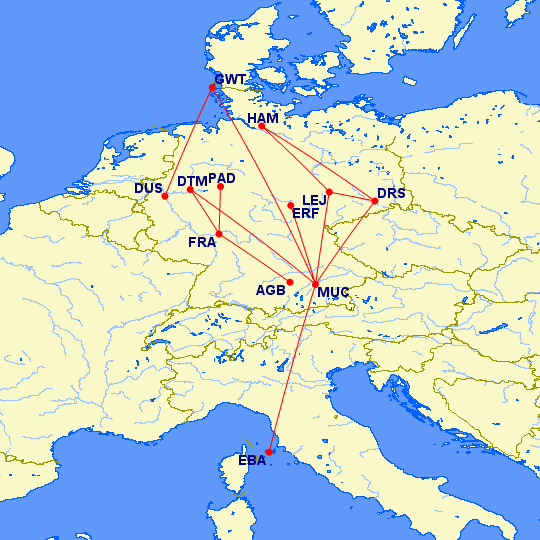 ATR-42-300 operated by Cimber Air: 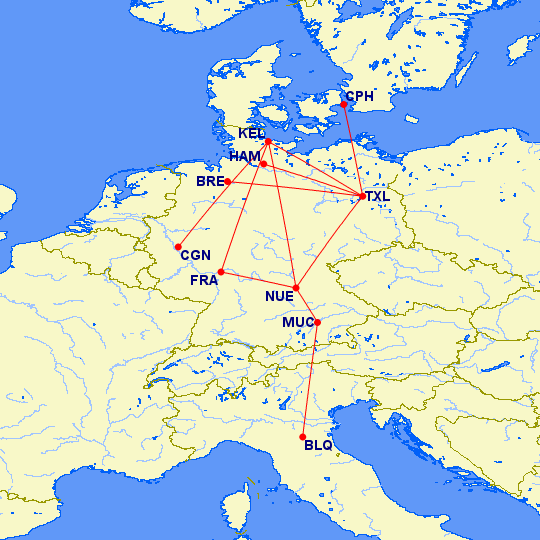 Fokker 50 operated by Contact Air: 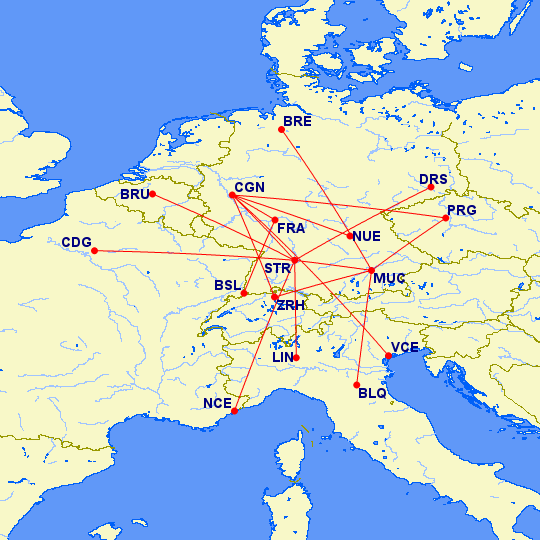 Download Lufthansa Regionals 1998 v3 Flightplans Here Download Lufthansa Regionals 1998 v3 Flightplans Here |
|
|
|
Post by chasensfo on Jan 13, 2023 8:22:15 GMT -5
\\Turkish Airlines 1998 v2 (13JAN23; Added fleet variations for use with repaints by Nils Gosselin and Micheal Pearson, added many new repaint links, re-ordered aircraft list for better AI parking, changed cruise speeds to AIG standard) Turkish Airlines (1933 - Present) IATA: TK ICAO: THY CALLSIGN: TURKISH Turkish Airlines Cargo (1984 - Present) IATA: TK ICAO THYC CALLSIGN: TURKISH Turkish Airlines is the national airline of Turkey, based in Istanbul(IST), and today is both one of the oldest airlines in the region and one of the largest in the world. The airline was started in 1933 as Turkish State Airlines, and as the name suggested, the airline was state-owned, though ownership changed hands between different branches of the Turkish government several times in the airline's early years. Initial flights were domestic with a handful of very small aircraft, international flights would not start until after WWII when a large number of surplus transport planes were readily available. Turkish used DC-3s and C-47s to launch international flights across the Middle East and to Europe, with Greece, Cyprus, Lebanon, and Egypt being early destinations. In 1956, the airline's name was changed to Türk Hava Yolları A.O, or "THY" for short, though "Turkish Airlines" was commonly used as well. The airline modernized through the 1960s with newer props like the Vickers Viscount and Fokker 27, but it was not until jet-powered 707s, Fokker 28s, and DC-10s joined the fleet in the 1970s that the airline began significant expansion. During this period of expansion, the company lost faith in the traveling public when a high-profile DC-10 accident occurred on the last leg of its journey to London(LHR) via Paris(ORY) with 346 lives lost, and with 7 hijackings occurring in a 9 year period from the mid-1970s to the mid-1980s. The struggling company also developed a poor reputation for customer service and punctuality and huge financial losses mounted. A new government took control of Turkey in 1983 and took interest in revamping the image of its troubled national carrier. By the 1990s, the airline had a relatively modern fleet, being an early operator of the A310 and A340, and the route network extended as far as New York(JFK) and Singapore(SIN). Turkey's proximity to the Persian Gulf resulted in a travel slump during Operation Desert Storm in the early 1990s, but in the mid-1990s, expansion picked up quickly, and a large fleet of Boeing 737s was amassed, replacing the aging DC-9s and 727s which had been the backbone of the fleet through the 80s and early 90s. The carrier also added several Avro Regional Jets, flying both the RJ70 and larger RJ100. The charter competition was growing intense, with many of THY's scheduled routes being dependent on leisure travelers traveling from Europe and the Middle East to Turkish resort cities. In response, Turkish leased and painted a TransAer A320 in late 1997 and 2 KTHY MD-90s in 1998 to operate charter flights in addition to the scheduled network. In addition to these aircraft, all aircraft in the fleet except for the ARJs and A340s had lax schedules on at least a few airframes to allow for charter work. These charters generally focused on Turkish resort cities but also frequented Ercan(ECN) in Turkish-controlled Cyprus, where half the island has belonged to Turkey since an invasion in the 1970s which destroyed the then-capital of Nicosia. ECN was used almost exclusively by Turkish charter carriers, with the exception being a single daily scheduled flight to IST operated by Turkish Airlines. Charter flights are representative, but the cities served are real. Around this same time, Turkish reached a codeshare agreement with JAL allowing it to expand to both Osaka(KIX) and Tokyo(NRT) with its A340-300s, with the airline still having a very limited long-haul network at the time. A triangle route to Singapore(SIN) and Bangkok(DMK) was also operated, along with service to 2 cities in both South Africa and the USA, but otherwise Turkish was nothing close to the global giant is today. A large fleet of A310-200\300s operated both domestic, European, and some medium-haul routes, especially to the Middle East and Western Asia. 737-500s and several brand new 737-800s which had arrived from Boeing during the summer of 1998 were assigned few scheduled routes, and mostly regulated to charter flights. The 737-400s were the backbone of the fleet, with a large number of aircraft flying all over both Eastern and Western Europe, as well as across the Middle East and even into Africa. The ARJs mostly flew domestically but also did a few routes into Europe and the Middle East. The airline was going through a minor livery change, with the red "THY" titles on the aft fuselage of the aircraft being removed, though several aircraft still wore the old titles. All long haul and most longer routes within the region are operated from IST, but every large city in Turkey is more or less a European focus city thanks to tourist demand, with flights all across the network. 3 727-200s were retained and converted into a cargo role, mostly flying to the Middle East and the Channel region of Europe, with MST seeing the most flights abroad. I have created representative flightplans for these aircraft, giving them plausible routes serving real destinations. The aircraft are mostly active on weekday nights, but photo evidence suggested frequent daytime operations as well, so you will see the aircraft flying in daylight often as well. The 3 planes spend the weekend parked in IST, SHJ, or MST. The leased A320 and the 2 MD-90s were returned by the end of 1998, with the MD-90s only operating for 5 months. Turkish would add a large number of 737-800s over the next several years, along with many Airbus A320 series jets, and would expand to serve almost every major airport in Europe, Africa, and much of Asia. Turkey's good relations with many volatile nations allow them to enjoy a virtual monopoly in many parts of the world, such as several cities served in undeveloped parts of Africa such as Sudan and Somalia. Today, Turkish is one of the world's largest airlines, with hundreds of destinations and a modern large fleet of 777s and 787s, a most impressive growth spurt for this carrier. When first compiled, there were many extra aircraft required to complete these flightplans, this is because Turkish left so much slack in some aircraft type's schedules due to charters that both had aircraft start and end in different cities and substituted on routes as needed, which photo evidence suggests was common. I was able to fit the majority of these extra flights into other aircraft, but there is 1 extra 737-400 operating a decent number of flights that did not fit. It is segregated in case you wish to exclude it. Flightplans by Vireak Ball and myself. The 737-800s were delivered in a modified livery with a grey belly, but I only found evidence of 1 A310-200 getting repainted in this livery by the end of the 1990s, the rest of the planes have an all-white fuselage. One A310-200 which was transferred to Turkish's Cyrpus subsidiary, KTHY, was operating for a while for Turkish in the KTHY livery and it is included in these plans. Make sure you make a new aircraft.cfg entry for it with the Turkish parking code and callsign. The leased A320 wore a unique livery and did not look like the 2000s-delivered Turkish A320. All repaints are completed. The following paints are available: FSXP A340-300 by Micheal Pearson (includes 2 variations): library.avsim.net/search.php?SearchTerm=fspxai_a340-300_thy.zip&CatID=root&Go=SearchFSPX A340-300 fleet by Nils Gosselin (1 relevant 1998 variation): drive.google.com/drive/folders/1e2DP5Lx2SustZX4MVJF1na98HwNGDusRTFS A310-200 (HD): www.juergenbaumbusch.de/?p=11976TFS A310-300 (HD): www.juergenbaumbusch.de/?p=11978TFS A310-200\300 fleet by Nils Gosselin: drive.google.com/drive/folders/17oX3v8Z1B4B-SDgs45hE_KNifcXPg5cxTFS A310-200 KTHY by Nils Gosselin: drive.google.com/drive/folders/1LmKZ69P-362Mq7zF7y1MPlzQrfB-Ig5zAIA 727-200 Cargo (Eduardo Villanueva's texture, I just converted it to a freighter): drive.google.com/drive/folders/1bbJeCXSTpF-tx3W1rCLKQ6_sL8ShIxAj?usp=sharingAIA MD-90 by RetroAI member ludo66x: drive.google.com/drive/folders/1TYlO79SpE1w76R_33jWF5sYYWm9brEX9FAIB A320 TransAer lease by RetroAI member @luddo66x: drive.google.com/drive/folders/1lfep-wK-6FGkN4w0HUTW9f5sgSaeE19dFAIB 737-800 fleet by Nils Gosselin: drive.google.com/drive/folders/1g_68BniJC2bXm5ACapK8NIIJZ8L2CEkfFAIB 737-800 fleet by RetroAI member ludo66x: drive.google.com/drive/folders/1Hn4CJPCK_VK8TjSJk8R7fDPNApXshuJEAIA 737-800 (use non-winglet model; FS9 Native): library.avsim.net/search.php?SearchTerm=ai738thy.zip&CatID=root&Go=SearchFAIB 737-500 Fleet by Nils Gosselin: drive.google.com/drive/folders/1nS3pWQUH1_5HPB9mUpGkAPv-pw5Fl_AlFAIB 737-400 Fleet by Nils Gosselin: drive.google.com/drive/folders/1quiWMJOhcOsgiLdkpwj0SotPXVzUMg3rFMAI ARJ100 (FS9 Native): library.avsim.net/search.php?SearchTerm=fm_thy_bae146_300.zip&CatID=root&Go=SearchTFS A340-300\A310-200\300, FAIB 737-400\500(with THY sticker), FMAI ARJ70 (all FS9 native\Non-HD paints): library.avsim.net/search.php?SearchTerm=turkish_airlines_1994_fleet.zip&CatID=root&Go=SearchA340-300:  A310-200\300:  727-200F Cargo: 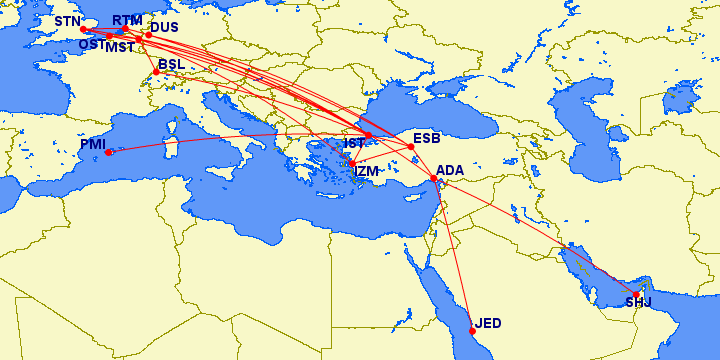 MD-90: 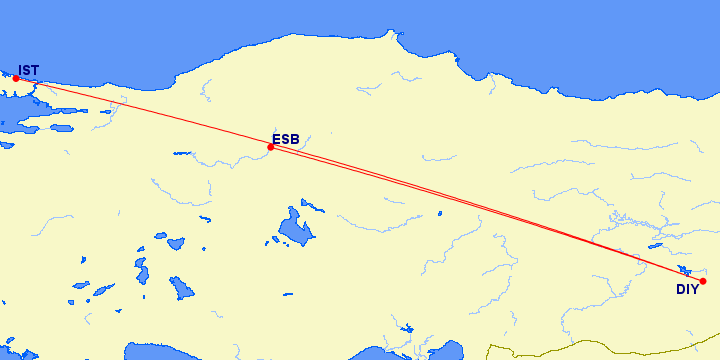 737-800:  737-500:  737-400:  Avro ARJ70\100:  Charter Flights: 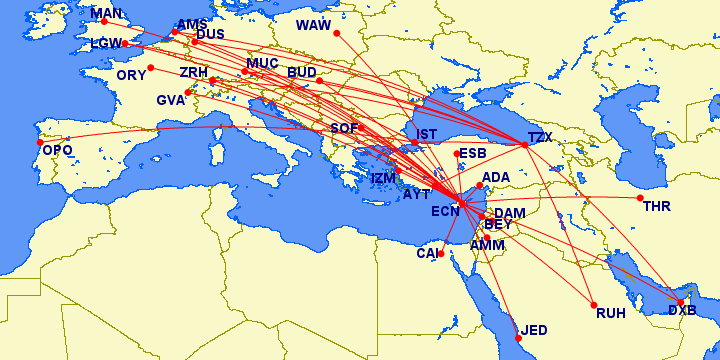 Download Turkish Airlines 1998 v2 Flightplans Here Download Turkish Airlines 1998 v2 Flightplans Here |
|
|
|
Post by chasensfo on Jan 13, 2023 10:12:00 GMT -5
\\Lufthansa 1998 v2 (13JAN23; Added many variations for newer liveries, corrected fleet size by adding some aircraft delivered in 1998 that were left out so now FRA will have realistic numbers of Lufthansa aircraft at the hangars, changed FAJS to FAOR for P3Dv4+ users, changed cruise speeds to AIG standard, added FS9 and FSX-P3Dv3 versions) Lufthansa (1926 - Present) IATA: LH ICAO: DLH CALLSIGN: LUFTHANSA Lufthansa is the national airline of Germany, based in Frankfurt(FRA) with large hubs in Munich(MUC) and Dusseldorf(DUS) and with focus cities all across Germany. Lufthansa was founded in 1926 as Deutsche Lufthansa, making it one of the oldest airlines in the world still operating today. Germany has a long history of aircraft manufacturing, and Lufthansa from the beginning was pioneering the latest monoplanes and other aircraft from the likes of Fokker, Dornier, and other German manufacturers. Lufthansa began to grow right as Hitler was taking power in Germany prior to WWII, and the airline was used for much government transport at the time. With plans to re-instigate war, Hitler began to rapidly build the fleet of Lufthansa with large transports which would be used as bombers and troop transports by the time the war started in the late 1930s. During this period of time, Lufthansa adopted the Nazi flag into its livery, which was displayed on all its aircraft until the end of the war in 1945(now there is a retro livery you'll never see!). Germany lost the war with the Soviet forces occupying part of the country and the rest of the allied forces occupying the other. Germany was split in 2, with West Germany being run by NATO, with Frankfurt as the capital, and East Germany, which was where the Soviet Bloc began and had Berlin as the capital. During this time, and until the fall of the Berlin Wall in the late 1980s, Lufthansa was not allowed to fly to Berlin. The result was Lufthansa growing in FRA instead of the Berlin airports and that is why to this day Lufthansa has its long haul flights out of almost every major German city except Berlin. Interflug was set up as the East German carrier and focused on the Eastern European nations and USSR while Lufthansa expanded in FRA with Western aircraft like the Convair 440 and Lockheed Constellation, and expansion began across Western Europe. Soon after, flights extended to North America, Asia, Africa, and the Middle East. By the 1960s, Lufthansa was well into the jet age with various jets like the 707, 720, and DC-8, and the airline was also an early operator of the Boeing 727 and the first customer of the Boeing 737. With this modern fleet, Lufthansa solidified its status as a major global carrier by the end of the decade. In the 1970s, Lufthansa was a very early operator of the 3 wide-body jumbo jets; the 747, DC-10-30, and Airbus A300. These aircraft allowed for more nonstop flights and further expansion across the globe, especially into North America and Asia. In the 1980s, Lufthansa pioneered the first global airline reservations system along with a few other airlines, and adopted a new livery in 1988 which it would wear for almost the next 3 decades with minor variations! In the 1980s, Lufthansa was also involved in setting up Air One in Italy, and later set up an Indian airline called ModiLuft, which operated from 1993-1996. Both airlines' liveries were based on Lufthansa's. By the mid-1990s, Lufthansa had replaced almost all of its older aircraft like the 727, DC-10, A300B, and 737-200 with modern aircraft like the 737-300\500, A320, and A340 series. In 1997, Lufthansa, Thai International, VARIG, United, and Air Canada, founded the Star Alliance, the first global alliance that went beyond an agreement between 2 carriers. This alliance allowed the airlines to codeshare on each other's flights and each carrier painted at least 1 aircraft in a special livery featuring part of the fuselage painted in the colors of each of the original carriers, with Lufthansa painting its first A340-200 in this livery. By 1998, Lufthansa was already huge and Europe's largest airline in terms of fleet size, and was also one of the only major airlines in Europe with multiple long-haul hubs. Most long-haul flights originated in FRA, but MUC had several A340-200 routes, mostly supplementing FRA service with larger aircraft, and a single DUS-EWR route was also operated. The last 737-200s had already exited the fleet, and the new A319s and A321s were already operating in large numbers, joined by a large fleet of 737-300\500s and A320s. A few 737-300s were "Quick Change" combi models, capable of being used as cargo aircraft, and had a large cargo door on the front left side of the plane. Several other cities had hub-like services across Europe, including HAM, STR, HAJ, and TXL. A decent number of A300-600Rs and A310-300s were active, both flying high-density European and domestic routes and some long haul, with the A310s mostly serving Western Asia while the A300s flew across the Middle East, and West Africa, and had a single transatlantic route to Boston(BOS). A large fleet of 747-400s and 747-400 Combis and A340-300s performed the majority of long-haul flights, while the remaining 747-200B\BMs mostly flew to the Eastern USA on routes under 10 hours. While Lufthansa's "Express" operation, which was the branding of high density no-frills domestic flights earlier in the 1990s, was well over with, a small number of aircraft still wore the titles in 1998. 2 A310s, 2 737-300s, and a 737-500 and A300 all still wore the titles as a livery variation, but they would all be repainted into the normal livery by the end of 1998. The rest of the fleet wore the standard 1988-introduced livery, but with the Star Alliance sticker, though it appears the "Express" aircraft did not get the sticker until after repaint. These flight plans include all scheduled flights in 1998, but do not include some cities added during an expansion period in 1999, which added flights to cities like Detroit(DTW) and Philadelphia(PHL). Lufthansa did not elaborate on the type of 747(though oddly the Combis were identified), A340, 737, or A320 series used in the OAG or it's own flight schedule, however, I was able to determine which flights were operated by which type of 747 or A340 usually, so those are mostly correct except where flights did not fit and aircraft had to substitute a flight here or there. But for the 737 and A320 series, this was not possible, so there the 737-300\500 and A319\320\321 routes were assigned at random, though it does appear that most of these aircraft did appear in most cities anyway so it isn't exactly unrealistic. Lufthansa would continue to grow FRA into a bigger global hub, while expanding long-haul flights from MUC and DUS as well, and would add various types including the A340-600, A380, and A350. Eventually, Lufthansa's parent company also bought Swiss International and rival Austrian Airlines. Today, Lufthansa is still one of the largest airlines in the world. Regional\Team Lufthansa and Cargo flights not included. Note these plans did call for 1 extra A300 which had enough routes that didn't fit anywhere for me to not delete it, but it is segregated if you wish to exclude it. Flightplans by Vireak Ball and myself. Several painters have completed the Lufthansa fleet for the 1990s, so users have the option to select which paints they'd like to use. If you wish to search individually, FS9-native Lufthansa paints with the 1997-introduced Star Alliance badge are available. However, the FS9-native fleets included here and Ranmori Scythe's 1993 repaints do not have the Star Alliance badge. I did not make livery variations for aircraft painted by Micheal Pearson representing the pre-1997 livery, you may plug those in yourself if you wish. Note that aircraft still wearing the Lufthansa Express did not have a Star Alliance logo. The following repaints are available: FAIB 747-400\400M Fleet by Micheal Pearson: drive.google.com/file/d/1mMhEwJvANCOH9bTYCuksEaPlwfVFZ4R2/viewFAIB 747-400\400M by Ranmori Scythe (No Star Alliance logo): drive.google.com/drive/u/1/folders/1ocqN0WcHyo7C9KW1HJ1jcQCccibHcf6BFAIB 747-400 by Juergen Baumbusch: www.juergenbaumbusch.de/?p=6442FAIB 747-200\747-200M fleet by Michael Pearson: drive.google.com/file/d/1m89mCapBatVumRhIa8aUIrsray5A3UXT/viewFSPX A340-300 Fleet by Michael Pearson: drive.google.com/file/d/1m5zuzQjkyLmtwcfqBGQ-aYCwl8IuxiN2/viewFSPX A340-300 by Juergen Baumbusch: www.juergenbaumbusch.de/?p=10665TFS A340-300 by Juergen Baumbusch: www.juergenbaumbusch.de/?p=3994FSPX A340-200 Fleet by Michael Pearson: drive.google.com/file/d/1m463SnmdfMnh8z3K2HGi3cp4UfH6nXP5/viewTFS A300-600R Fleet by Michael Pearson: drive.google.com/file/d/1mBkVZGj_3AKityAPeMRIIY4_z-hLXhS0/viewTFS A300-600R by Ranmori Scythe (I added the Star Alliance logo to his 1993 paint): drive.google.com/drive/u/1/folders/1VWpfnnCXglQlNV1GwuJeVOuoJYqzSvLyTFS A310-300 Fleet by Michael Pearson: drive.google.com/file/d/1mFtZp9LXIC8TtUCedkahgCgQmrpB73gp/viewTFS A310-300 by Ranmori Scythe (No Star Alliance logo): drive.google.com/drive/u/1/folders/1_Uo-eBYN5aw2EFcCupIi2VGejDPg-COWFAIB A321 by Juergen Baumbusch: www.juergenbaumbusch.de/?p=2075FAIB A320 Fleet by Michael Pearson: drive.google.com/file/d/1mHNEa06FQDeOObbUP0zgqnvmD-Y3_Z9E/viewFAIB A320 by Juergen Baumbusch: www.juergenbaumbusch.de/?p=2072FAIB A319 Fleet by Micheal Pearson: drive.google.com/file/d/1mmJNTS0jgRU1uae8X4wniKpPqkm6-Bdf/viewFAIB A319 by Juergen Baumbusch (don't use SATCOM model): www.juergenbaumbusch.de/?p=2069FAIB 737-500 Fleet by Micheal Pearson: drive.google.com/file/d/1mgZdQ36QIQWrzqzuW5QfmwPezQC_2nR4/viewFAIB 737-500 by Ranmori Scythe(No Star Alliance logos): drive.google.com/drive/u/1/folders/1noQScQjrpMzYtYAIWQhm25G1MYmoJxltFAIB 737-300\300QC Fleet by Micheal Pearson: drive.google.com/file/d/1mPkDWtyor3r69wZmzueuvqLc-jptYIrn/viewFAIB 737-300\300QC by Ranmori Scythe (No Star Alliance logos): drive.google.com/drive/u/1/folders/1BKgqcksGjLEOtvvEnH80F1WjjJTf1yBFFS9-Native 1994 Fleet by Eduardo Villanueva; AI Aardvark + FAIB + TFS models (No Star Alliance logo): library.avsim.net/search.php?SearchTerm=lufthansa_1993-1994_fleet.zip&CatID=root&Go=SearchFS9-Native Early 90s fleet by Nick Prestwich; AI Aardvark + DJC models + TFS Models (No Star Alliance logo): library.avsim.net/search.php?SearchTerm=lufthansa_90_s.zip&CatID=root&Go=Search747-400M Combi:  747-400:  747-200B\200BM Combi:  A340-300:  A340-200:  A300-600R: 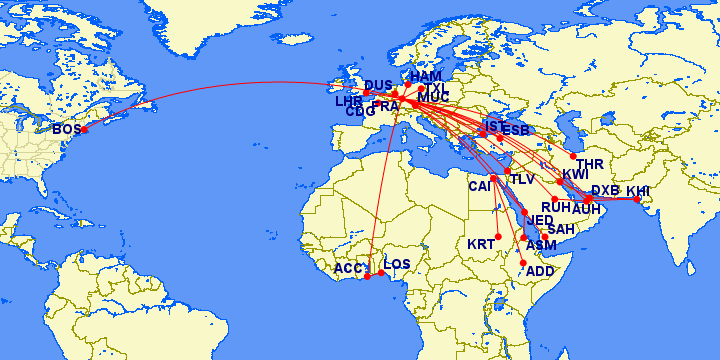 A310-300: 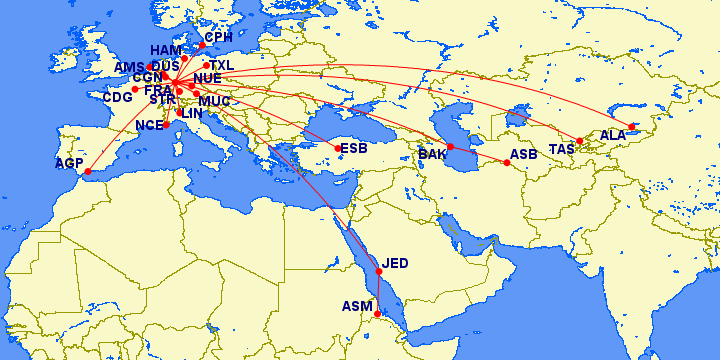 A319\320\321: 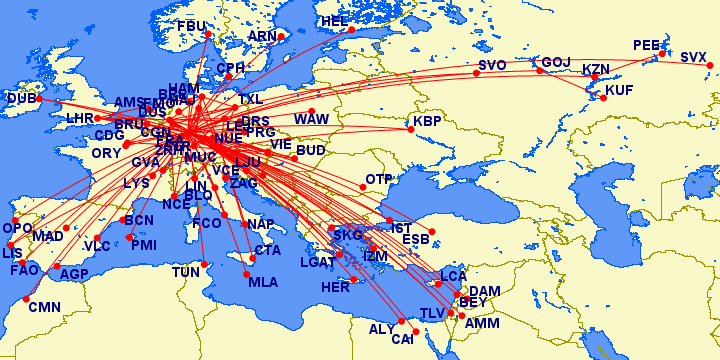 737-300\300QC Combi\500: 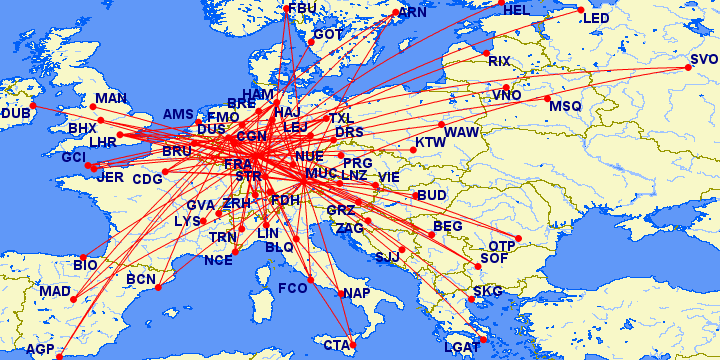 Download Lufthansa 1998 v2 Flightplans Here Download Lufthansa 1998 v2 Flightplans Here |
|
|
|
Post by ludo66x on Jan 15, 2023 7:07:39 GMT -5
I fixed the mismatched textures for the fokker 50, went through all my other paints it's either dds or bmp no mismatch.
Also i noticed that you forgot to switch FAJS to FAOR in the P3d4 flighplans for lufthansa
The little Europe folder on your drive is also empry
|
|
|
|
Post by chasensfo on Jan 15, 2023 19:25:58 GMT -5
I fixed the mismatched textures for the fokker 50, went through all my other paints it's either dds or bmp no mismatch. Also i noticed that you forgot to switch FAJS to FAOR in the P3d4 flighplans for lufthansa The little Europe folder on your drive is also empry
Ok thanks I'll upload it and make the change to the plans. Honestly, it's been a pain in the ass trying to include different sim versions. I'm probably going to stop. Every update have to go back, research what parts of Africa and Southeast Asia the airline flew to where tons of airport codes changed, then the sim versions, and all over again each time there is an update. It just gets too complicated to try and make versions spanning 20 years of simulators as I've now identified over 40 airports in my plans (mostly in Africa and Indonesia but also many in the US where it seems like most 3-character codes like "O83" at airports with air service have since become 4 letter "KXXX" codes) which have changed between FS9 and P3Dv5\MSFS. Much more than I ever thought lol. If someone wants to make the changes themselves and give me back the plans fixed for the different versions, that's totally fine and I'll upload it. Just plug the plans into AIFP and it'll tell you if you try to compile them for MSFS or P3Dv5. |
|
|
|
Post by chasensfo on Jan 17, 2023 8:30:04 GMT -5
\\Air Algerie 1999 v2 (17JAN23; added variations for new repaints, made 737-200 variations more realistic as I had missed one additional Combi and Gravelkit aircraft each) Air Algerie (1953 - Present) IATA: AH ICAO: DAH CALLSIGN: AIR ALGERIE Air Algerie, based in Algiers (ALG) is the national airline of Algeria, a French-speaking North African nation. Air Algerie was formed from the assets of Compagnie Generale de Transports Aeriens CGT, a conglomerate French-owned multinational airline that eventually broke up to form Air France and other carriers, which operated from 1909 to 1920. That carrier operated the first flights between Paris (ORY) and ALG, but Algeria would not again have its own flights until 1953 when service re-started as Air Algerie with DC-3 and DC-4 flights to Paris. Being owned by France at the time, Air Algerie was a very early jet operator of the French SE-210 Caravelle, using the type on flights to Paris from 1960. In 1962, the French granted Algeria independence, and in 1963 the new Algerian government took the majority control of the national carrier. Over the next few decades, Algeria was rather unstable, with civil war and several large terrorist movements. Due to the instability, Algeria did not enjoy the leisure resort status shared by neighboring African nations on the Mediterranean coast like Tunisia and Egypt, and thus, the demand for the airline was more limited. Regardless, the carrier expanded rapidly across Europe with multi-stop flights and like many African airlines, acquired small numbers of an eclectic number of aircraft, eventually operating over 30 different aircraft types though only 1-5 examples of each were usually operated. Over the next few decades, the 737-200s and 727s were acquired in numbers large enough to become the mainstay of the fleet, allowing the retirement of the DC-3s and DC-4s in 1971. Other types operated, mostly for short periods of time, included the Nord 262, Convair 640, Lockheed Constellation, SNCASO S.O. 30P Bretagne, Jetstream 31, DC-10-30, DC-6, Nord Noratlas, L-1011, Handley-Page Herald, and a total of 19 747s leased from Air France for short periods of time. A300s were leased from Air France in 1974 becoming the first widebody jets for Air Algerie, and by that time, the Algerian government had fully absorbed the carrier. The 1970s saw instability and a slew of accidents and incidents, including hijackings. In just 3 decades through the 1990s, the airline lost 11 different types of aircraft to 16 serious accidents. This was a far worse safety record than most other African airlines with frequent service to Europe, and as public confidence sank, the airline's widebody fleet dwindled until by 1998, just 3 767-300s and 2 A310-200s were left. Most flights through Europe were multi-stop with 727s and 737-200s, with service as far as Moscow (SVO) via Frankfurt (FRA). Fokker 27s offered an extensive domestic network, with the 737-200s also serving many regional routes. A cargo network was set up with L-382G Hercules aircraft, the civilian version of the C-130, with 2 of these aircraft in service. Also flown by Air Algerie at the time but not included in these flight plans were a large fleet of helicopters, a Lockheed Jetstar operated for the Palestine government, and several small Beech turboprops used for charter and air ambulance flights across rural Algeria. At least one of the 737-200s had a gravel kit, but there were not enough photos to verify that any other 737s had the modifications. Operations were extended across the Middle East over the next 2 decades, and as such, the airline often found itself affected by foreign conflict in places like Beirut (BEY), Damascus (DAM), and Benghazi (BEN) which had all been abandoned by most carriers by the late 1990s. A 737 was destroyed in an attack on BEN. Air Algerie would eventually settle on next-generation 737-600\700\800s as the backbone of its fleet, while A330-200s make up the long-haul fleet and the Fokkers were replaced with ATR 72s. Air France has since repurchased a minority stake in the airline. Flightplans and routemaps by Vadim Stepanyuk. All repaints are now completed. Prior to Micheal Pearson's repaints, I had linked to temporary 1990s modifications I'd made of 2000s paints by Nils Gosselin. You may now retire those in favor of proper repaints by Michael Pearson. 8 helicopters and 5 King Air turboprops operated by Air Algerie are not included due to a lack of information. A Lockheed JetStar operating on behalf of the Palestinian government will be included separately. The following repaints are available: FSPX 767-300 fleet by Michael Pearson: mpai4fs.com/2023/01/16/air-algerie-767-300/FAIB 767-300 by Nils Gosselin (my modification to make his 2000s paint into the 1990s): drive.google.com/drive/u/1/folders/1UkFedyxhROKpWeBvTgl1L05pQyz7MvT9TFS A310-200 fleet by Michael Pearson: mpai4fs.com/2023/01/16/air-algerie-a310/TFS A310-200 by Juergern Baumbusch: www.juergenbaumbusch.de/?p=11952AIA 727-200 fleet by Micheal Pearson: mpai4fs.com/2023/01/16/air-algerie-727-100/FAIB 737-200 fleet by Michael Pearson: mpai4fs.com/2023/01/16/air-algerie-737-200/HTAI L-382G (FS9 Native): library.avsim.net/search.php?SearchTerm=htai_l-100-30_air_algerie.zip&CatID=root&Go=Search CPAI Fokker 27 fleet by Michael Pearson: mpai4fs.com/2023/01/16/air-algerie-fokker-27/767-300:  A310-200: 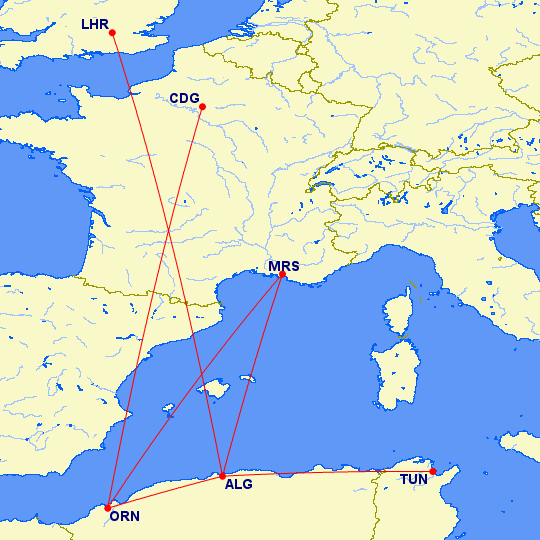 727-200:  737-200:  Fokker 27: 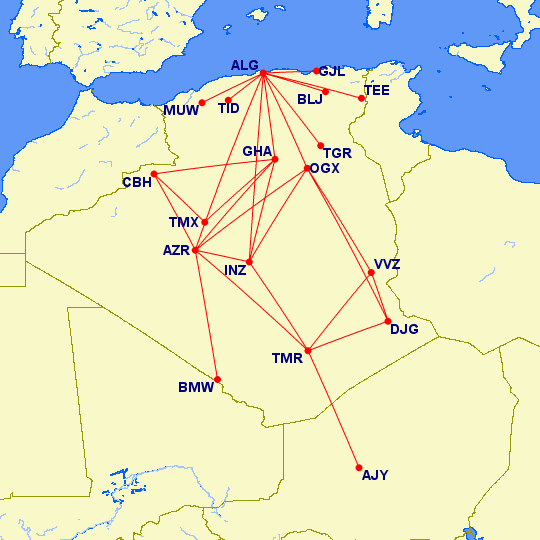 L-100-30 Cargo:  Download Air Algerie 1999 v2 Flightplans Here Download Air Algerie 1999 v2 Flightplans Here |
|
|
|
Post by chasensfo on Jan 17, 2023 12:29:48 GMT -5
\\JAL 1998 v3 (17JAN23; Added various new variations by Micheal Pearson to represent individual aircraft art, re-numbered aircraft for the easier addition of any future livery updates, added several 777s delivered in the late 1990s that were missing now there will always be several 777s on the ramp at HND like real life, added a 747-300SR. 747-100SUD, 747-100SR, 747-100 and 747-200B, segregated 767-300s with GE engines and gave them mostly international routes, added a "LITE" version without individual repaints and an FS9 version, changed cruise speeds to AIG standard, updated hosting for Ranmori's files since his site is down) Japan Air Lines (1951 - Present) IATA: JL ICAO: JAL CALLSIGN: JAPAN AIR Japan Air Lines, better known as JAL, is the flag carrier of Japan and one of the largest airlines in Asia. The carrier was started a few years after WWII and almost immediately embarked on Transpacific flights, making a multi-stop journey to SFO as "JL001" via several points including Wake Island and Honolulu, becoming SFO's first foreign airline and keeping the flight number to this day, except non-stop from HND-SFO now. While ANA started up a few years later, it would be over 30 years until they started transpacific flights, so JAL was able to rapidly expand as Japan's global carrier. Initially, JAL was crossing the Ocean in vintage props like DC-6s, but JAL was also an early customer for jets like the DC-8 for international flights and Convair 880s for domestic and medium-haul routes around Asia. When the 747 was introduced, both JAL and ANA were important customers with the need for both high-density domestic air travel and transpacific flights. Due to the relationship between the USA and Japan, especially when it comes to commerce, JAL was pressured into buying more 747s than they probably needed, becoming the world's biggest operator of the type and having over 100 examples in the fleet at one point! So it should come as no surprise that even in 1998, JAL still had several unique examples of the 747, some of which it was the world's only operator of at the time. In addition to the standard 747-100, 747-200B, 747-300, and 747-400, JAL also was operating the 747-100SR(short range), 747-100SUD(stretched upper deck), 747-300SR, and 747-400D(domestic). All of these models were unique to Japan, and the 747-100SUD and 747-300SR were unique to JAL at the time. They were all high-density models that sacrificed available fuel load in exchange for high-density seating and a higher maximum takeoff weight(MTOW), as they rarely did flights over 2 hours so the extra fuel really wasn't needed like a traditional 747. These models were used purely domestically unless it was a very rare last resort to send them on a short flight to another Asian country. Some high-density routes like HND-ITM\FUK had several of these 747s departing in a single hour. Occasionally, the international 747s would operate domestic flights, and the 747-400 actually had a few scheduled domestic routes at the time, usually connecting KIX and NRT with other airports in Japan. The domestic 747s almost never visited NRT and KIX, serving HND and ITM instead. 3 of these 747-300SRs wore a flamboyant pink "Super Resort Express Okinawa" livery and were used between ITM\HND and OKA, one of the longest domestic flights in the country. The aircraft leaves around the same time in the morning and return in the evening, dedicated to these routes. Much like ANA, the JAL fleet has plenty of meticulous details that made creating these plans difficult(we spent 3 years fine-tuning them!), but thanks to Ranmori's expertise, I believe these are an accurate representation of one of 1998's most interesting airlines. In addition to the 747s, JAL still maintained a large fleet of DC-10-40s and MD-11s for long-haul and medium-haul flights along with a sizable fleet of 767-300s. Like the 747s, the DC-10-40s had a domestic subgroup, of which JAL was the only operator. Only 2 domestic examples were left in 1998, the rest of the domestic DC-10 flights were operated by the international versions between flights abroad. The DC-10s had a focus city in Hong Kong(VHHX) and as many as 6 at once may be seen on the ground there between flights to their many Japanese destinations. JAL had recently added their first 777-200s and 777-300s, which were strictly doing domestic flying on high-density routes at the time. Though JAL did have a large domestic network, it was nowhere near as large as ANA, ANK, and JAS's Japanese networks as JAL chose to focus on international flying and connections and mostly selected the busiest domestic routes to compete in. For the thinner routes, JAL had a fleet of 737-400s, while everything in between was served by 3 767-200s which served a domestic-only role and domestically configured 767-300s. Unlike ANA, there was no designation on the titles of these 767-300s to distinguish them from their international counterparts. JAL has historically been a fan of special liveries, and 1998 was no different. In addition to the Super Resort Express Okinawa planes, 3 747-400Ds wore special 50th-anniversary colors, with a white and a yellow version. In addition, one of the 2 remaining 747-100SUDs wore a Disney Dream Express blue livery with clouds and Disney characters on the fuselage. While not a special livery per se, the MD-11s were dubbed the "J-bird" and each MD-11 had a unique bird decal on the winglets. Similarly, the 737-400s were beginning to be renamed after flowers with a unique sticker, and the 777-300s after constellations with a unique star sticker. Like most Japanese airlines, JAL had frequent training flights to Shimojishima(SHI\RORS) near Okinawa, and several aircraft during the week operated simulated training flights there during idle time performing practice approaches. These were the glory days for JAL's international network, with a vast diversity of destinations and multiple daily flights to many long-haul destinations such as SFO, LHR, JFK, ect. By the late 2000s, JAL would run into trouble and be forced to cut many of its routes and dramatically downsize the aircraft, and cut frequencies on others, falling billions of US dollars into debt and cutting eliminating JAL Cargo in 2010. However, JAL would survive its restructuring, and today is still a global carrier and one of the largest in Asia, with a modern fleet including the Boeing 787 and Airbus A350. As most Japanese airports with international service had segregated gates\terminals for international flights and many JAL aircraft were domestic-only, please assign "atc_parking_codes=JALD,JAL" to the domestic fleet. Updated scenery for Japanese airports will reflect domestic ANA and JAL parking. As there are many variations for repaints included, a LITE version is also included with minimal special liveries and variations for quick installation. The update creates many extra aircraft to match the real-life fleet size with many long ground times, as was very common for JAL aircraft with the hangars always full of airplanes. Ranmori Scythe has painted most of the fleet, except for most of the special liveries and the individual art-themed aircraft. Michael Pearson did fleet repaints which are required if you wish to display the many aircraft like the MD-11s and 777s which each had an individual name and themed art logo. The first few 777-200s had no individual logo at the time so use Ranmori's paint for those either way. A LITE version is included for those who don't wish to install all individual liveries. As for the DC-10, either EVAI\AIM if it converts well for you or FSP. I will update the DC-10 links if the AIM DC-10-40 is ever publically released with repaints. Note that the 737-400 fleet also had individual artwork and there will be a future update if those aircraft are painted. Most late 1990s special liveries are still needed. Here are the available paints: FAIB 747-400 by Ranmori Scythe: drive.google.com/drive/u/1/folders/14DCCj1GpA-52JimMgOqKpgB1ZU7u57TmFAIB 747-400 fleet by Michael Pearson: drive.google.com/drive/folders/17TWBp5uGk_1Ln5KCnVHpgmbAwqu6XWRFFAIB 747-400D by Ranmori Scythe: drive.google.com/drive/u/1/folders/14sx3dwwlrFB-Ulr4jqdQ008lqvZgKGRnFAIB 747-400D fleet by Michael Pearson: drive.google.com/drive/folders/17TWBp5uGk_1Ln5KCnVHpgmbAwqu6XWRFFAIB 747-300\747-300 Super Resort Express Okinawa\747-300SR\747-100SUD by Ranmori Scythe: drive.google.com/drive/u/1/folders/1ITh0n-NFtUqPS5TFhvyEr9nuOK_tImurFAIB 747-300\300SR fleet by Micheal Pearson: drive.google.com/drive/folders/17TWBp5uGk_1Ln5KCnVHpgmbAwqu6XWRFFAIB 747-200 by Ranmori Scythe: drive.google.com/drive/u/1/folders/1uUnfH8Y9YdBvCCNa4BQ8RNGIo115shx4FAIB 747-200 fleet by Micheal Pearson (uses -100 model): drive.google.com/drive/folders/17TWBp5uGk_1Ln5KCnVHpgmbAwqu6XWRFFAIB 747-100\100SR by Ranmori Scythe: drive.google.com/drive/u/1/folders/1oOL7CbOyCN0Wf2JhV0xmOynv0Cjqhs5dFAIB 747-100 fleet by Micheal Pearson: drive.google.com/drive/folders/17TWBp5uGk_1Ln5KCnVHpgmbAwqu6XWRFFSPX 777-300 by Ranmori Scythe: drive.google.com/drive/folders/1b7vPxwc6-2r86RkHaAQl8oSUbUvLv-5O?usp=sharingFSPX 777-300 fleet by Micheal Pearson: drive.google.com/drive/folders/17TWBp5uGk_1Ln5KCnVHpgmbAwqu6XWRFFSPX MD-11 by Ranmori Scythe: drive.google.com/drive/u/1/folders/1y0yrHl84Qwd9vftFpv577HBLcx9A-bLmFSPX MD-11 fleet by Michael Pearson: drive.google.com/drive/folders/17TWBp5uGk_1Ln5KCnVHpgmbAwqu6XWRFFSPX 777-200 by Ranmori Scythe: drive.google.com/drive/u/1/folders/12yiTwLSZF0RhEcMIrzdMZrf8qZizgJN4FSPX 777-200 fleet by Micheal Pearson: drive.google.com/drive/folders/17TWBp5uGk_1Ln5KCnVHpgmbAwqu6XWRFFSP DC-10 by Ranmori Scythe: (I never saved it, share it with me and I'll upload it) EVAI DC-10-40 by Micheal Pearson: drive.google.com/drive/folders/17TWBp5uGk_1Ln5KCnVHpgmbAwqu6XWRFEVAI DC-10-40 and AIA Boeing fleet by Eduardo Villanueva (FS9 Native): library.avsim.net/search.php?SearchTerm=jal_1993.zip&CatID=root&Go=SearchFAIB 767-300 by Ranmori Scythe: drive.google.com/drive/u/1/folders/18QiLO10rApqayqFa9NniE2gkS46PN18aFAIB 767-300 by Micheal Pearson (JAL Group Package): drive.google.com/drive/folders/17TWBp5uGk_1Ln5KCnVHpgmbAwqu6XWRFFAIB 767-200 by Ranmori Scythe: drive.google.com/drive/u/1/folders/1XDez5hNRkbgT_FYIdLpa0axnpVeZ1E_NFAIB 767-200 by Micheal Pearson (JAL Group Package): drive.google.com/drive/folders/17TWBp5uGk_1Ln5KCnVHpgmbAwqu6XWRFFAIB 737-400 by Ranmori Scythe: drive.google.com/drive/u/1/folders/1mKuI9oE5dfAvc67XydiESfrj5JjAAKC3747-400:  747-400D:  747-300:  747-300 Okinawa Super Resort Express:  747-200: 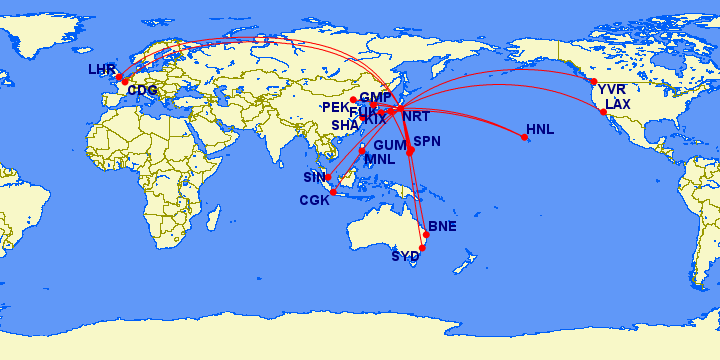 747-100SUD:  777-300: 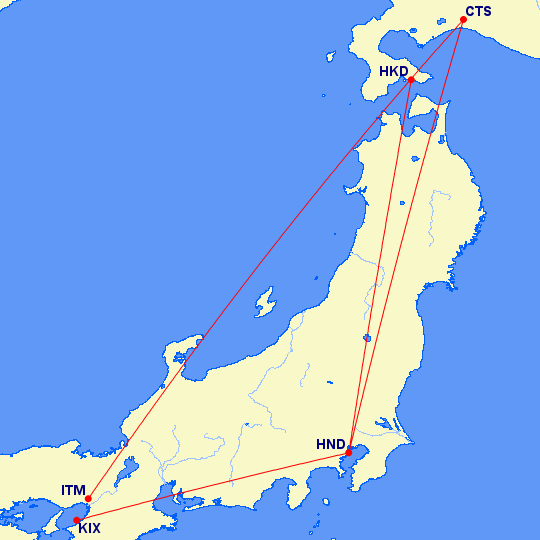 MD-11: 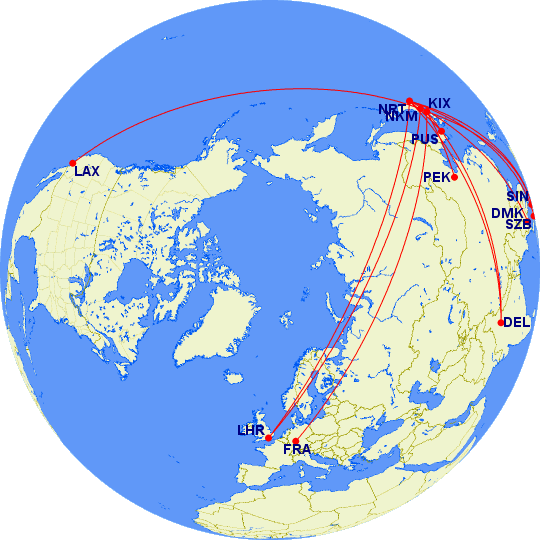 777-200:  DC-10-40 International: 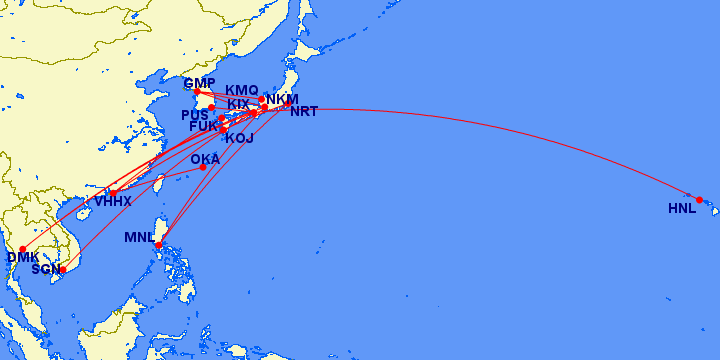 DC-10-40 Domestic: 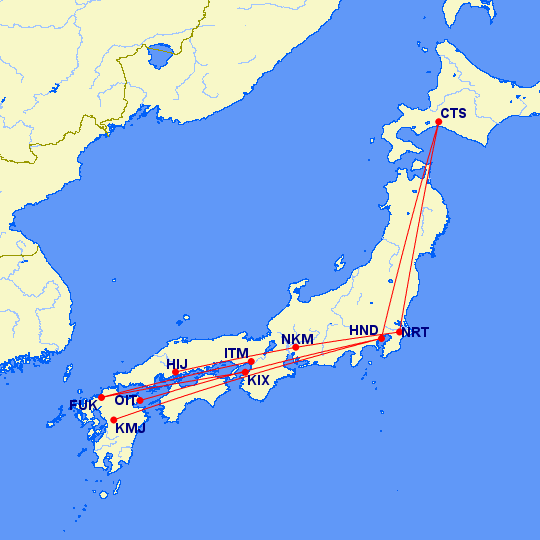 767-300 International: 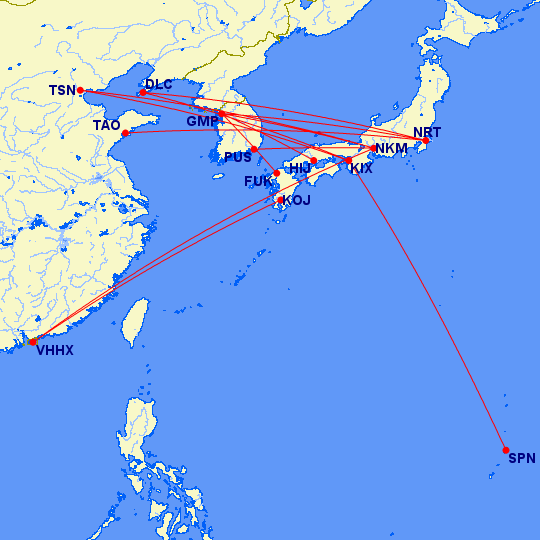 767-200\300 Domestic:  737-400:  Download Japan Air Lines JAL 1998 v3 Flightplans Here Download Japan Air Lines JAL 1998 v3 Flightplans Here |
|
|
|
Post by chasensfo on Jan 20, 2023 13:53:31 GMT -5
//Far Eastern Air Transport - FAT 1998 v3 (20JAN23; added numerous charters, re-ordered aircraft list for better AI parking, changed cruise speeds to AIG standard, added 2 weekly non-stop TPE-SFS flights from the July 1998 OAG which were discontinued by the August schedule, aircraft with large downtime outside of TSA/KHH ferry to TSA) Far Eastern Air Transport - FAT (1958-2019) IATA: FE ICAO: FAT CALLSIGN: FAR EASTERN Far Eastern Air Transport(FAT) was the largest domestic airline in Taiwan, based in Taipei's domestic TSA airport with another large hub in Kaohsiung(KHH). Founded in 1957, FAT began flying the following year only operating charter flights for the first 7 years of operation. The airline operated an assorted and modern fleet of Handley Page Heralds, Vickers Viscounts, DC-3s, and Beechcraft C-45 Expeditors initially. In the 1960s, the carrier joined the jet age with the rare 737-100 and the SUD Caravelle joining the fleet. The jets allowed for better competition against state-owned China Airlines, and the carrier started scheduled operations in 1965. FAT would lose many of its props to serious accidents between 1969 and 1980, with the relatively small carrier losing 6 aircraft and also suffering a hijacking. Newer and more efficient 737-200s were added to the fleet in the early 1980s as the carrier grew, and FAT quickly lost one in the worst accident in the carrier's history when one of the 737-200s broke up in flight. Despite the troubled start, FAT never again had a serious accident over the next 38 years it operated. MD-80s began to join the fleet in large numbers in the 1990s and were joined by 3 757-200s while the 737-200s were quickly retired as new MD-80s arrived. In 1996, FAT was authorized to begin scheduled international flights, having been awarded a route from KHH to Subic Bay (SFS) near Manila and another route from KHH to the popular holiday destination of Palau (ROR). By the late 90s, the MD-80/90 ruled Taiwan, and FAT was no exception with a sizable fleet of MD-80s operating high-frequency flights on the relatively small island's trunk routes. The competition was intense at the time, as several new carriers had popped up in the 1990s and by now had either grown into something of a threat or were in the process of merging. FAT's MD-80s had to compete with more efficient MD-90s, arriving factory new frequently to the competitors, and everything from turboprops like the Do228, Saab 340, and Dash-8 to smaller jets like the Fokker 100 competing in this busy domestic air corridor. A small fleet of 3 737-200s and 3 757-200s joined the MD-80s on some scheduled services but were mostly regulated to charter flights. The 757s only operated scheduled a scheduled high-frequency route between TSA and Taichung (TNN), which twice weekly continued onward to ROR. The 737-200s flew a few domestic routes mostly centered on the holiday destinations of Magong (MZG) and Kinmen (KNH). The KHH-SFS route, operated 3 times weekly, was joined at the time by a nonstop TPE-SFS route which would be discontinued by August 1998. Despite these limited international services, charters were occasionally operated to Phenom Phen (PNH) and Macau (MFM), though a lack of photos suggests these were either infrequent or at night. Both SFS and ROR were linked to both secondary Taiwanese cities and MFM by charters that summer, though many charters were also domestic and centered on MZG and KNH. A few MD-80s were flying in a non-standard livery with a white tail, along with 2 others in special liveries and 1 757-200 promoting Taiwan's Major League Baseball. FAT only served TPE at the time with scheduled flights on TPE-KHH-SFS and TPE-SFS routes, all other Taipei services used TSA, except for some charters. FAT usually used the tiny domestic terminal in the Northwest corner of TPE at the time outside of non-stop international arrivals. FAT would fly with the MD-80 as the backbone of its fleet for almost the rest of its entire history but would run into trouble. The airline was kicked out of IATA in 2008 over safety concerns and almost went out of business, having to suspend flights and not pay its staff for almost 3 years until 2011 to survive a waiting period for re-certification. After the restart, FAT added ATRs to the fleet but would fly on as the last MD-80 operator in Asia, visiting smaller cities in Japan and other destinations with them on charters late in the carriers life, until the very end of 2019 when the airline ran into trouble regarding the retention of it's operating certificate and had to ground all flights on 13DEC19. Just over 1 month later in late January 2020, the certificate was formally revoked and the last MD-80s in Asia were gone. Most of the special liveries are needed, the rest of the paints are done: AIG 757-200: library.avsim.net/search.php?SearchTerm=aig_752_fat.zip&CatID=root&Go=SearchAIA MD-80: library.avsim.net/search.php?SearchTerm=aimd82ef.zip&CatID=root&Go=SearchAIA MD-80 B-28007: library.avsim.net/search.php?SearchTerm=aimd82ef2.zip&CatID=root&Go=SearchFAIB 737-200: mpai4fs.com/2022/07/23/far-eastern-air-transport-737-200/757-200: 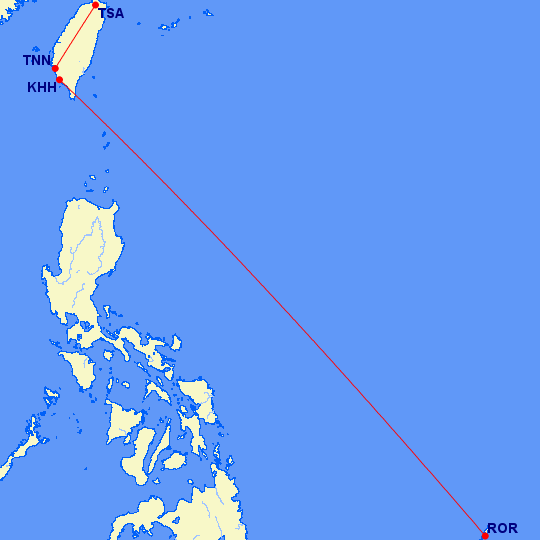 757-200 Charters: 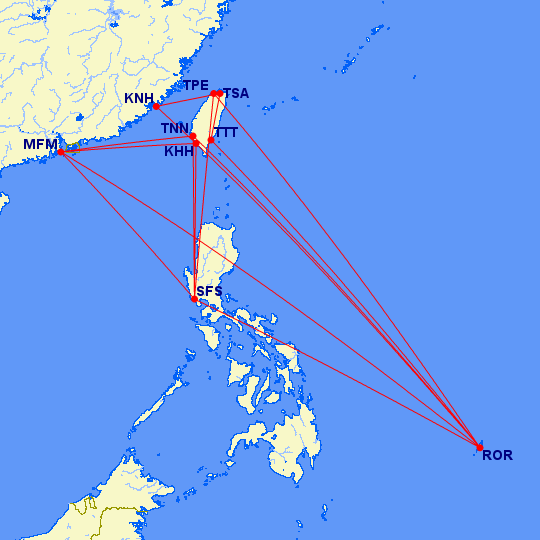 MD-80: 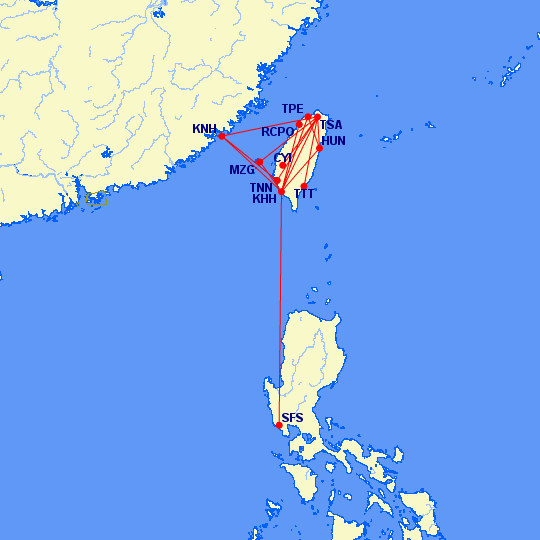 MD-80 Charters: 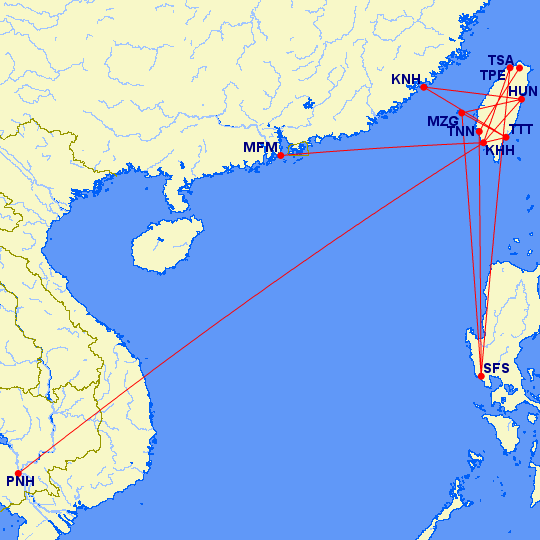 737-200:  737-200 Charters:  Far Eastern Air Transport (FAT) 1998 v3 Flightplans here Far Eastern Air Transport (FAT) 1998 v3 Flightplans here |
|

















 " alt=" "]
" alt=" "]





































































































